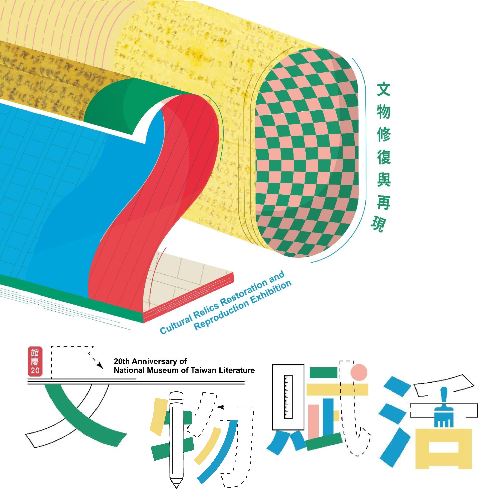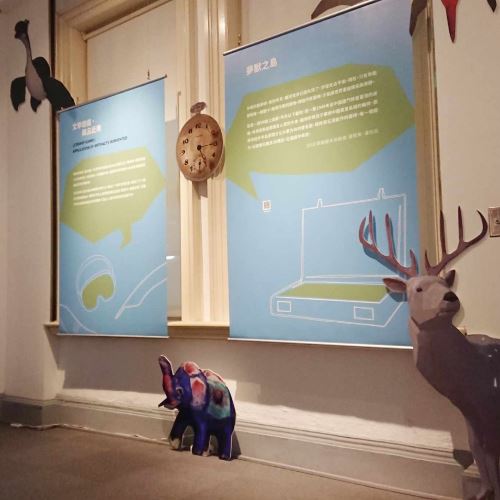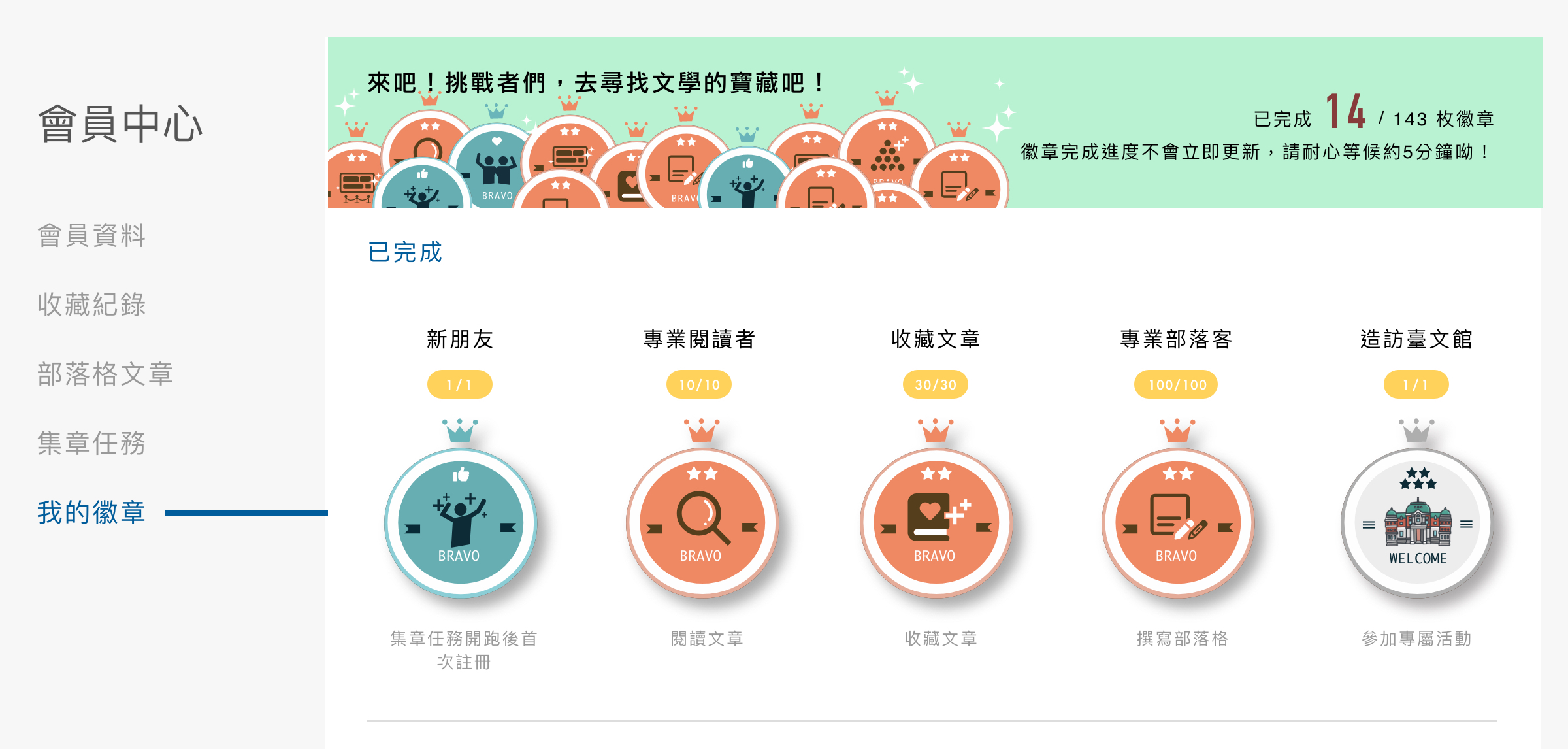◍ The Unbearable Lightness of Penned Literary Works ◍ The Beauty and Sorrow of Fountain Pens ◍ A Snippet of Artifact Held Dear
◍ Restoring Seared Manuscripts: the Journey of Recovery ◍ Trudge Forward to Move Forward
◍ Rehabbing Aged Literary Works – All Hands on Deck ◍ Sketches of a Bohemian Scholar
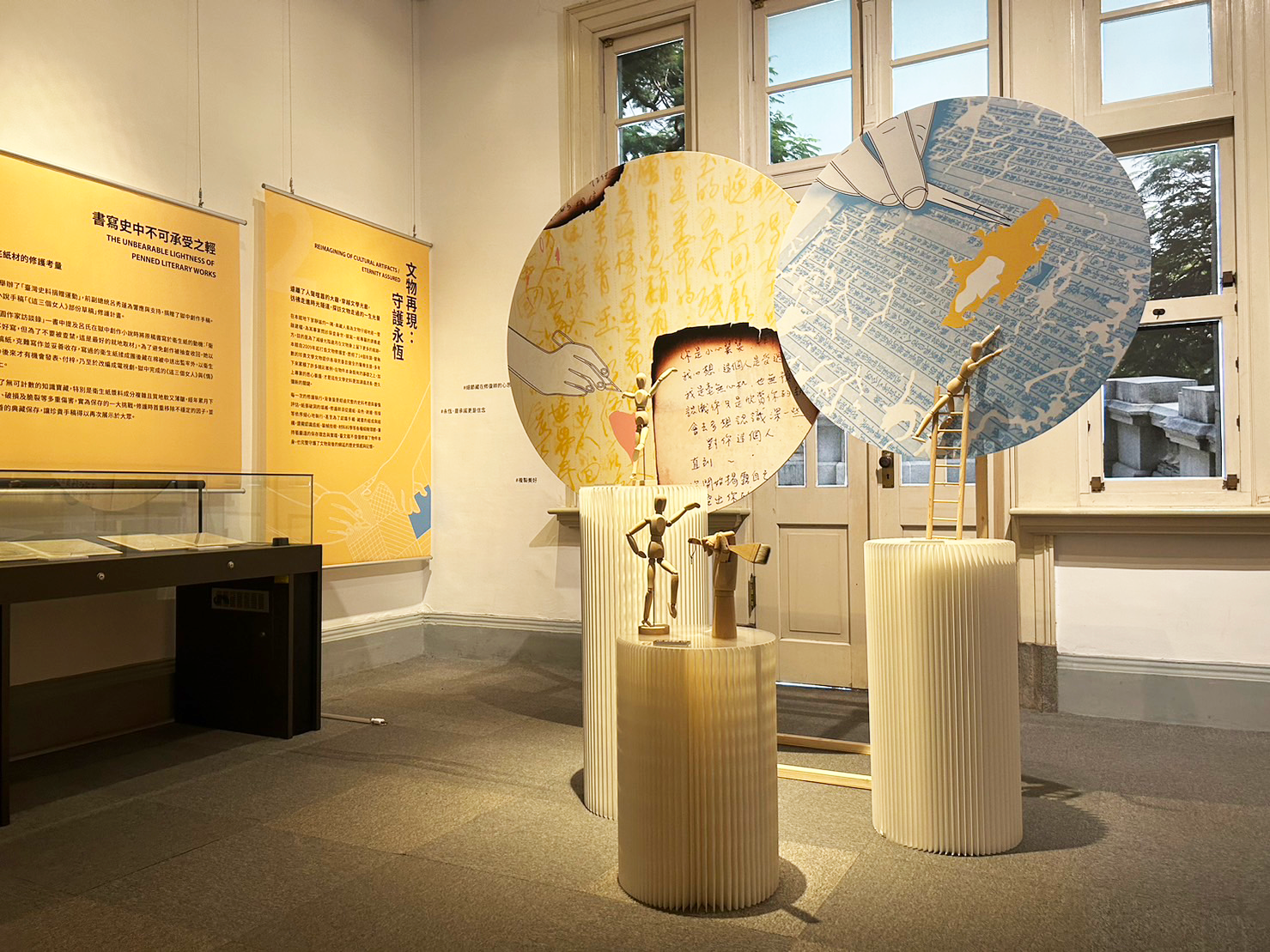
Away from the noisy lobby and through the corridor of literature, the exhibition allows visitors to walk into a time tunnel and have a peek at the life of each artefact.
In a tranquil corner of the museum's basement, the curation staff carefully catalogue each artefact. They investigate the artefacts with speciality to obtain the exclusive tips for preserving them in order to reduce deterioration. In 2009, the museum set up a restoration room. For 14 years, the space has provided comprehensive support for restoring all types of artefacts. For so many years, there have been many successful cases. Based on what is left of the artefact, professional and careful restoration is carried out, which is the key to allowing these cultural artefacts to last for a long time.
Every restoration requires complete historical research and careful evaluation. To repair holes in paper, the restorer must carefully follow the process from selecting the paper, dying the paper, working the edges into place and positioning. What's more, to understand the materials and binding methods of manuscripts and books, it is necessary to know various details such as papermaking, binding technology, and material science. By meticulously adhering to principles and putting them into action, National Museum of Taiwan Literature not only restores the artefact but also protects the historical sentiments and memories behind each artefact.
The Unbearable Lightness of Penned Literary Works
Discussing the Restoration of Special Base Paper Materials from the Collection Stories
In 2001, during its planning phase, the Taiwan Literature Museum launched a "Taiwan Historical Materials Donation Campaign." To respond and show support, former Vice President Lu Hsiu-lien donated her prison writings.In 2008, the Taiwan Literature Museum initiated a restoration project for four novel manuscripts, partial drafts of THESE THREE WOMEN.
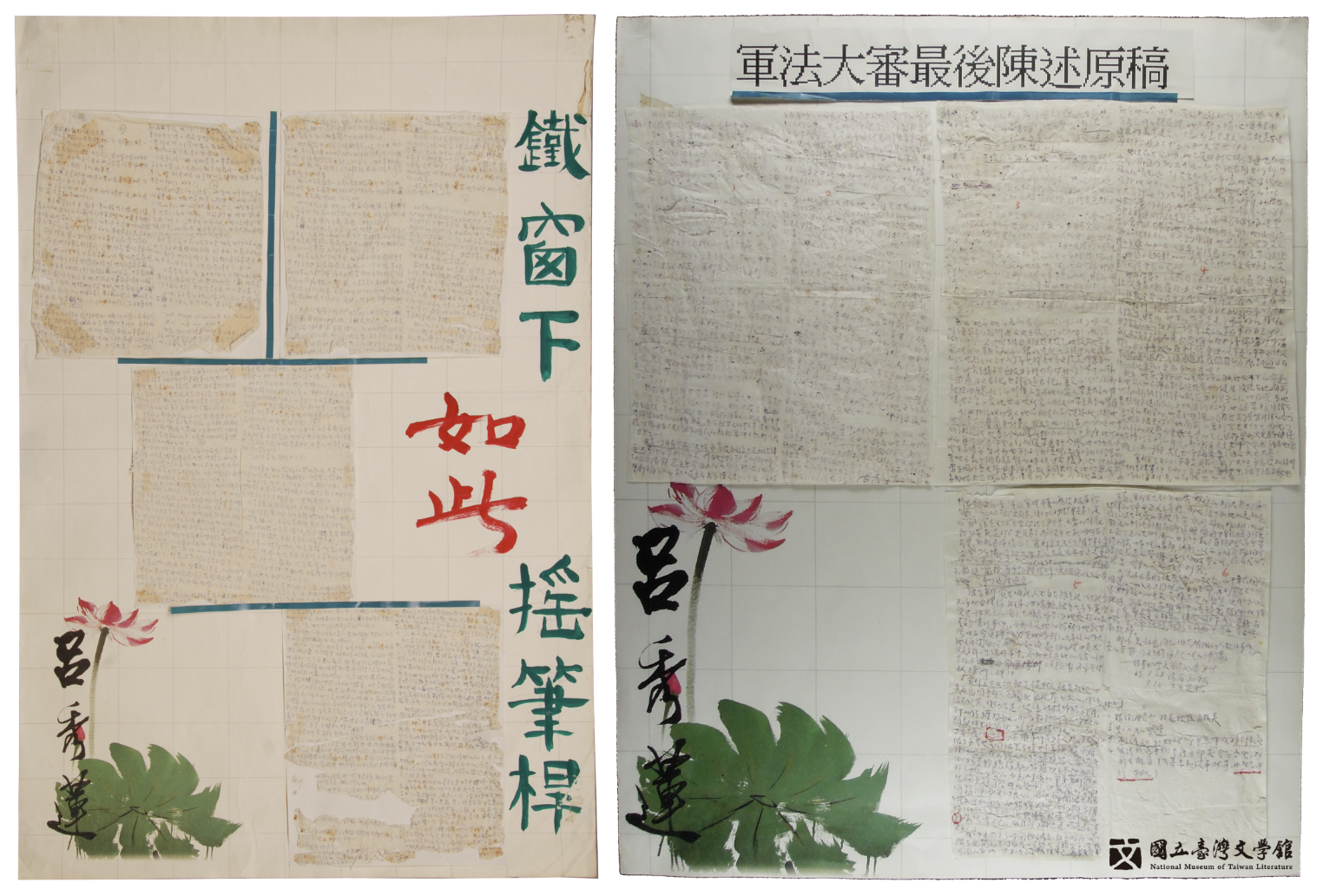
⭔ Part of the manuscript of THESE THREE WOMEN(Left)、"Final Statement for the Military Court"(Right)by Lu Hsiu-lien
The museum's collection includes two manuscripts donated by Lu: Partial Draft of THESE THREE WOMEN (left) and "Final Statement for the Military Court" (right). Before entering the museum, they were mounted on photocopy paper with double-sided tape and then re-mounted on poster paper for display. (Kept in National Museum of Taiwan Literature)
In the book "Peach Blossom Shining, Bright Its Flowers: Interviews with Taoyuan Writers," it is mentioned that Lu wrote her original manuscripts on toilet paper while in prison. She said, "Toilet paper is soft, thin, and wrinkled, making it difficult to write on. But to avoid inspection and confiscation, it was the best material available at hand." To prevent her writings from being confiscated, she wrote on toilet paper laid over an upside-down plastic basin, carefully storing her work afterward. The written toilet paper was crumpled into balls and hidden in quilts to be smuggled out of prison. Only then did the toilet paper-written novel THESE THREE WOMEN have a chance to be published and even adapted into a television drama. Both These Three Women and Emotions, were written on toilet paper while she was in prison.
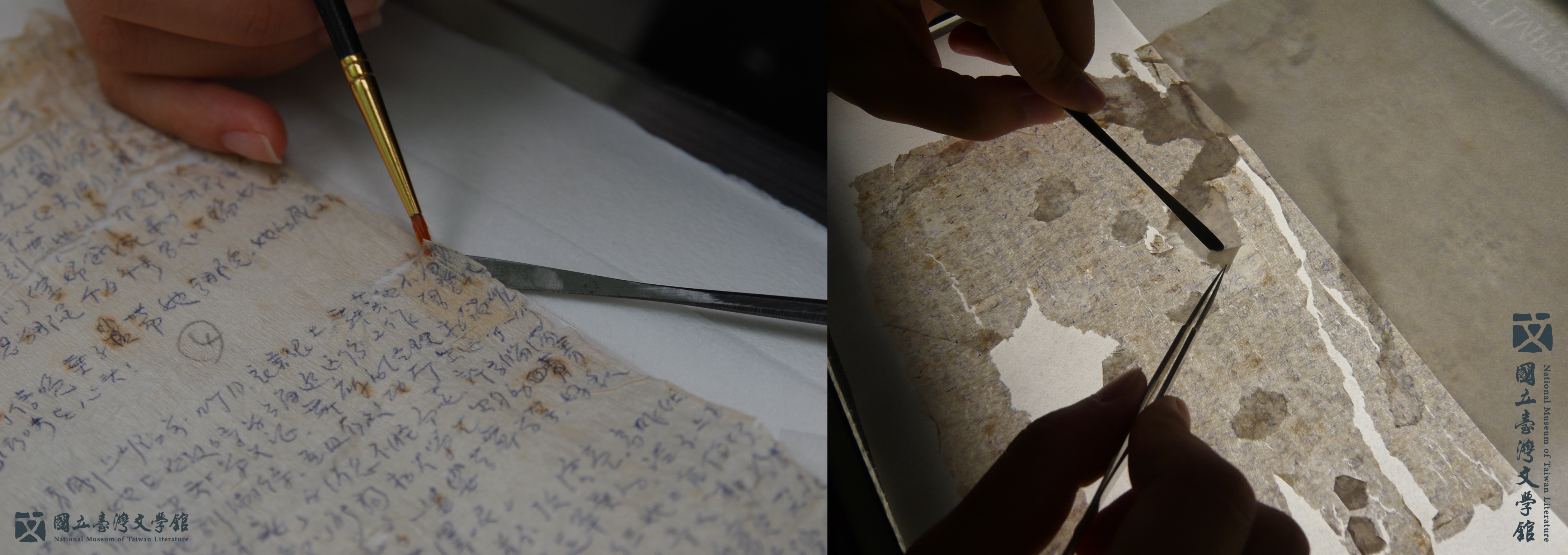
⭔ Removing Adhesive Residue from the Back of Artifacts
Organic solvent toluene is applied to double-sided tape, gradually separating the tissue paper, backing paper, and tape. Remaining residue is dampened with pure water, then carefully lifted off. (Kept in National Museum of Taiwan Literature)
The thin sheets of paper have carried countless treasures of knowledge throughout history. Particularly with toilet paper, which has complex pulp components and is both soft and wrinkled, challenges arise in preservation. Over the years, additional issues like localized adhesive stains, tears, and brittleness have complicated matters. The priority during restoration is to remove unstable factors and reinforce the toilet paper's structure. Through proper archival storage, these valuable manuscripts can be displayed to the public once again.
The Beauty and Sorrow of Fountain Pens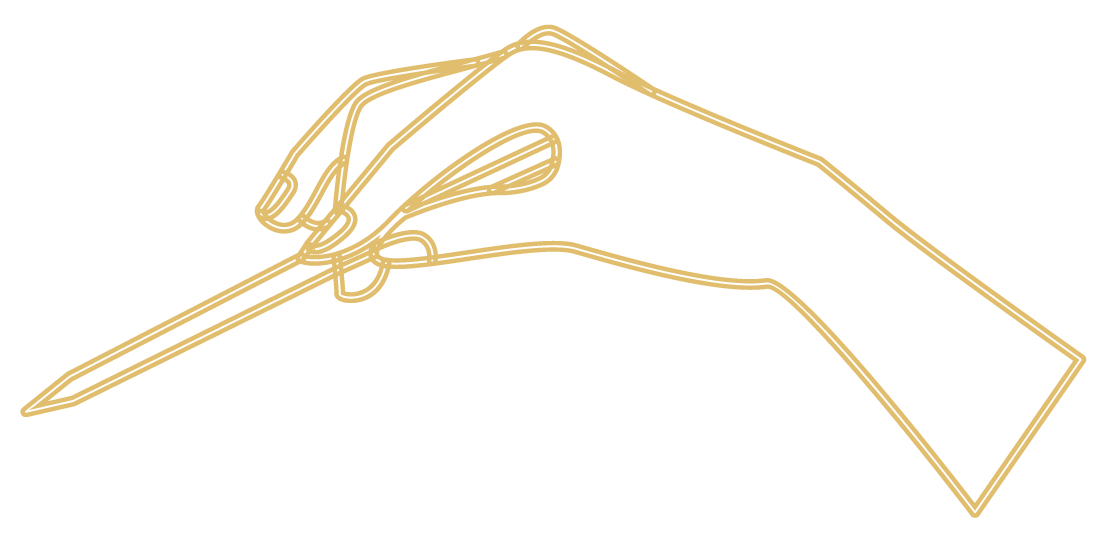
Restoration of Liu Nao'ou's 1927 Diary: The Preservation Issues of Tannic Acid Iron Ink and Western-style Bound Books
Liu Nao'ou, a trendsetting literary figure from nearly a century ago, wrote his diary using a fountain pen ink favored in the West and among early intellectuals in Taiwan, including Lai Ho, Tsai Pei-huo, and Lu Ho-jo. However, the ink's composition accelerates the hydrolysis and oxidation of the paper. To fully preserve these precious inscriptions, meticulous care and maintenance are required.
The NEW LITERATURE DIARY 1927 was written in a fountain pen on a hardcover notebook with a rounded spine. Its original condition was poor—beyond mold and leather separation, the fountain pen ink, due to its unique composition of iron ions and tannic acid, led to the color of the text changing over time from deep blue-black to deep brown. This also caused paper oxidation, embrittlement, and breaks, severely impacting both readability and preservability.
During restoration, the primary focus was on stabilizing the book and its inner page structure. The original tape adhering to damaged was removed, the pages were reinforced, and the book's structure was disassembled and rebuilt step by step, allowing the diary to regain its past elegance.
As a year-long companion on the desks of literary enthusiasts, this is not an empty, personality-less diary, but a NEW LITERATURE DIARY specifically designed for the 'literary youth.' It is not just sold to the literary youth; it is also used to cultivate them.
— Chen Yun-yuan in "The Crossroads of Taiwan's Literary Youth—Liu Nao'ou's NEW LITERATURE DIARY 1927."

⭔ Stabilizing the Structure of Books and Inner Pages
The original pages were machine-stitched; after restoration, they are hand-bound—using Coptic stitching to reattach the pages, and a rounding hammer to adjust the spine to match the original binding. (Kept in National Museum of Taiwan Literature)

⭔ Diary of Liu Na-ou (1927)
After restoring the NEW LITERATURE DIARY 1927, the spine cloth was adhered to the book cover, and the endpapers were glued to the cardboard cover, rehabilitating the book's complete structure.(Kept in National Museum of Taiwan Literature)
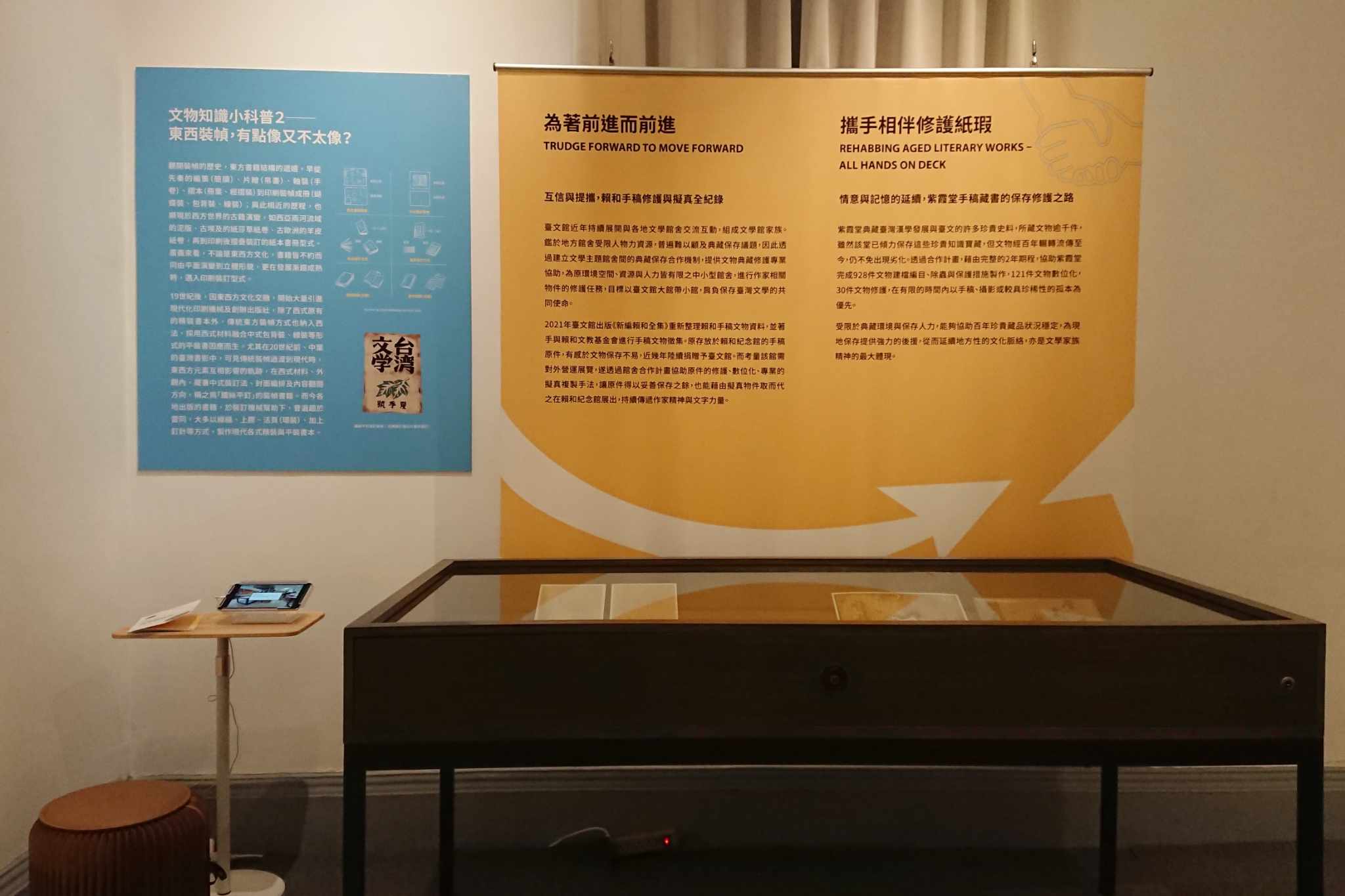
A Snippet of Artifact Held Dear
Patching Together Lost Psalms: The Restoration and Preservation of Traditional Chinese Thread-Bound Books
Shi Qiong-fang and Shi Shi-jie were a father-son pair of scholars during the Qing Dynasty in Taiwan. The earliest known works of Shi Shi-jie in Taiwan were edited by Huang Dian-quan based on Shi's manuscripts and compiled into HOSUKAN COLLECTION. In 2017, artifacts related to Shi Shi-jie were donated to the museum. These included four volumes of ZHE YUAN YIN CAO (missing volumes one and two), four volumes of HOSUKAN GAO, and two volumes of HOSUKAN CAO. Upon content comparison, the six volumes of ZHE YUAN YIN CAO and HOSUKAN CAO are not found in the already published HOSUKAN COLLECTION or the COMPLETE POETRY OF TAIWAN. The four volumes of HOSUKAN GAO also slightly differ from the published HOSUKAN COLLECTION, making them exceptionally valuable.
Huang Dian-quan stated in HOSUKAN COLLECTION-PREFACE about Shi: "He lived a modest life in civil service but was diligent in composing poetry. Everything he experienced, saw, or wrote was incorporated into his literary works, thus preserving a wealth of historical data for the relevant times and places." As these artifacts are aged and in poor condition, conservators painstakingly patched together, organized, and supported pages severely damaged by insect infestation. They were then re-sewn in accordance with the original binding format to restore the artifacts to their complete appearance.
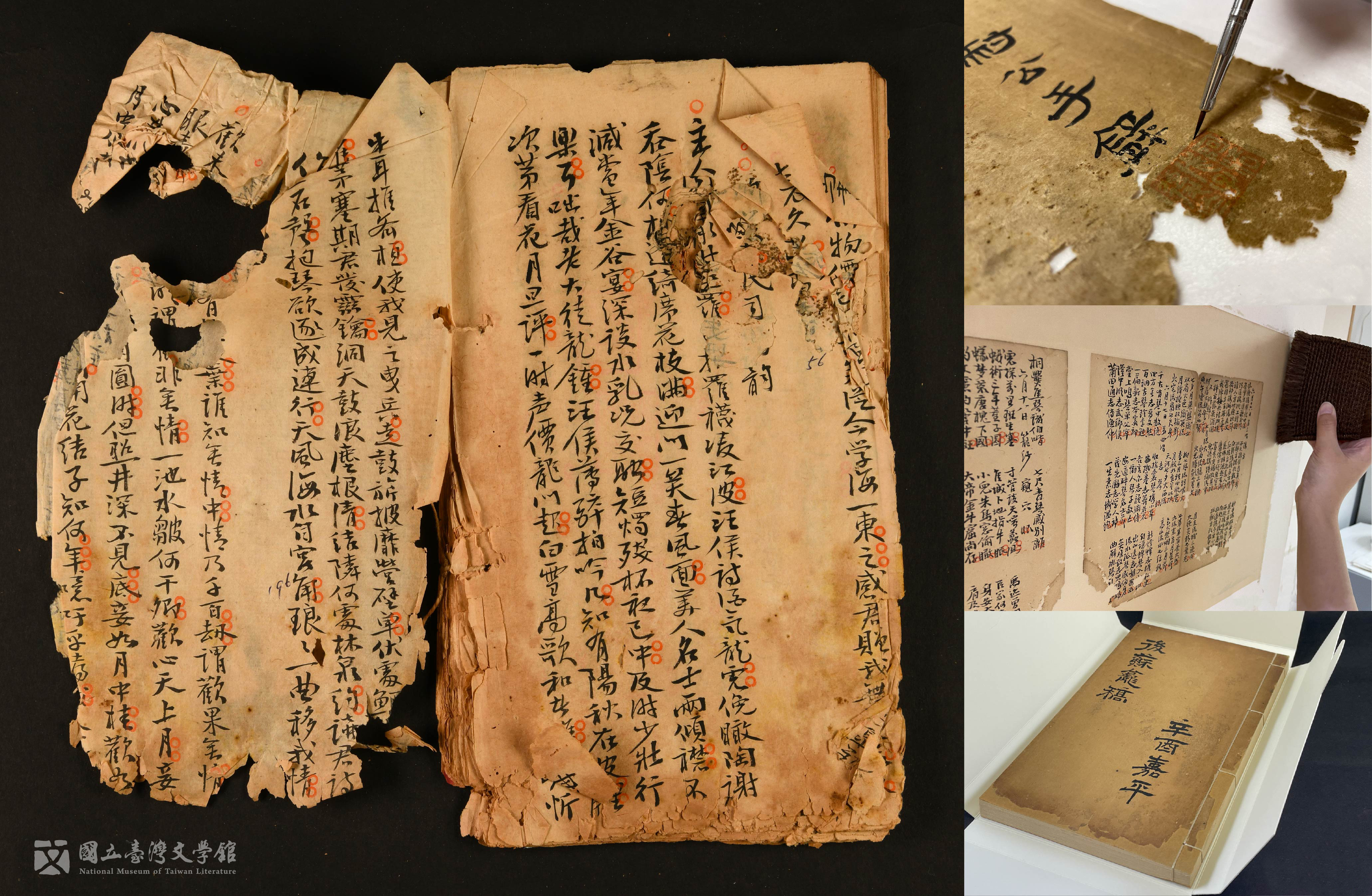
⭔ Shi Shi-jie's HOSUKAN GAO Series
This batch of thread-bound books suffered severe insect damage, and many pages are stuck together making the handwriting illegible and the manuscripts impossible to browse. Some manuscripts also suffered from moisture and mold issues. After entering the museum, they were immediately isolated by individual volumes and underwent gradual restoration work over the years. (Kept in National Museum of Taiwan Literature)
Cultural Trivia on Artifacts
Eastern and Western Bookbinding: Similar Yet Distinct?
Flipping through the history of bookbinding, the evolution of Eastern book structures started early on, ranging from pre-Qin bamboo and wooden slips (jian du), silk books (po shu), scroll bindings (shou chuan), to folded books (tse yeh, jing zhe zhuang) and printed bound volumes (butterfly, wrapped-back, and thread bindings). A similar historical process is also seen in the evolution of Western ancient books, such as clay tablets in the Mesopotamian region, papyrus scrolls in ancient Egypt, and parchment scrolls in ancient Europe, leading up to the folded and bound paper books after the invention of printing. Broadly speaking, whether in Eastern or Western cultures, books have evolved from flat forms to three-dimensional shapes. As the development matured, they transitioned into printed and bound formats.
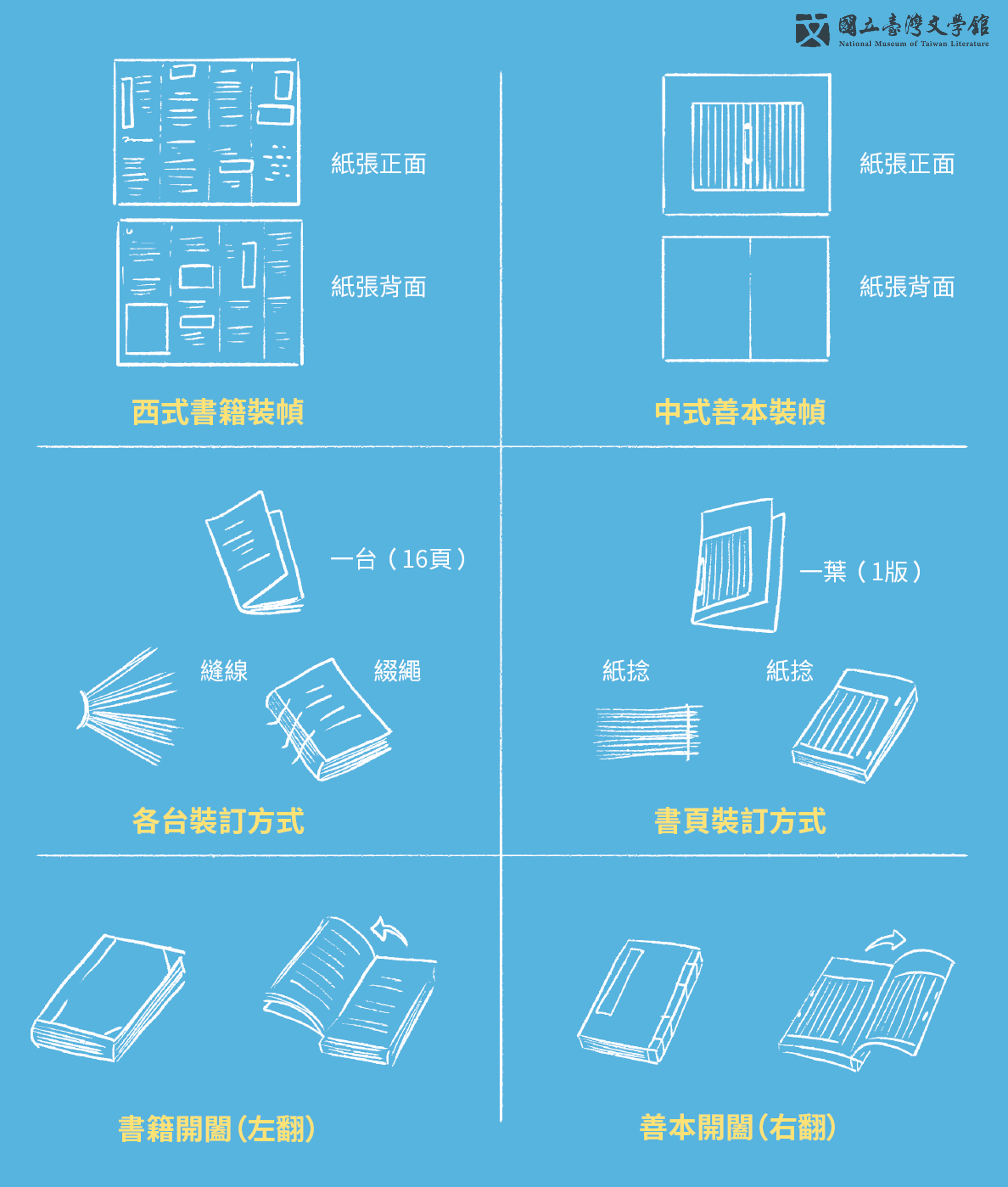
⭔ Differences in Eastern (Right) and Western (Left) Bookbinding Illustrated
NATIONAL MUSEUM OF TAIWAN LITERATURE STAFF JOURNAL 2020, page 246.
After the 19th century, due to the blending of Eastern and Western cultures, modern printing machinery and publishing houses were introduced on a large scale. Besides the original Western-style hardcover books, traditional Eastern binding methods were also adopted and adapted, leading to the creation of paperback books that fused Western materials with Chinese wrapped-back and thread binding methods. Especially noticeable in Taiwan during the early and mid-20th century is the transitional trajectory of traditional bookbinding into modernity, where Eastern and Western elements mutually influenced each other. These books, often called "wire-stapled" bindings, incorporate Western materials and appearances but hide within them Chinese binding techniques, cover layouts, and reading directions. Nowadays, books published worldwide tend to look increasingly similar, largely due to the aid of binding machinery. Most modern hardcover and paperback books are made using methods like sewing, gluing, loose-leaf (ring binding), and stapling.

⭔ Example of Wire Flat Nailing
The right-hand binding edge is stapled. (Kept in National Museum of Taiwan Literature)

Restoring Seared Manuscripts: the Journey of Recovery
Restoring the Lost Aura—Recreating Manuscripts after a Fire
On May 11, 2019, a massive nocturnal fire in Taimali destroyed the Hunter School founded by indigenous writer Sakinu and also affected the family home where his manuscripts were stored. The fire inevitably led to immeasurable and irreversible damage due to burning, heat, and soot, further exacerbated by water used in firefighting, affecting the culture and memory these artifacts represent. During the immediate aftermath of the fire, the priority was rescue and recovery, often neglecting the care of surviving artifacts. Depending on the extent of the damage, this often led to compounded deterioration, significantly increasing the challenges in restoration and preservation.
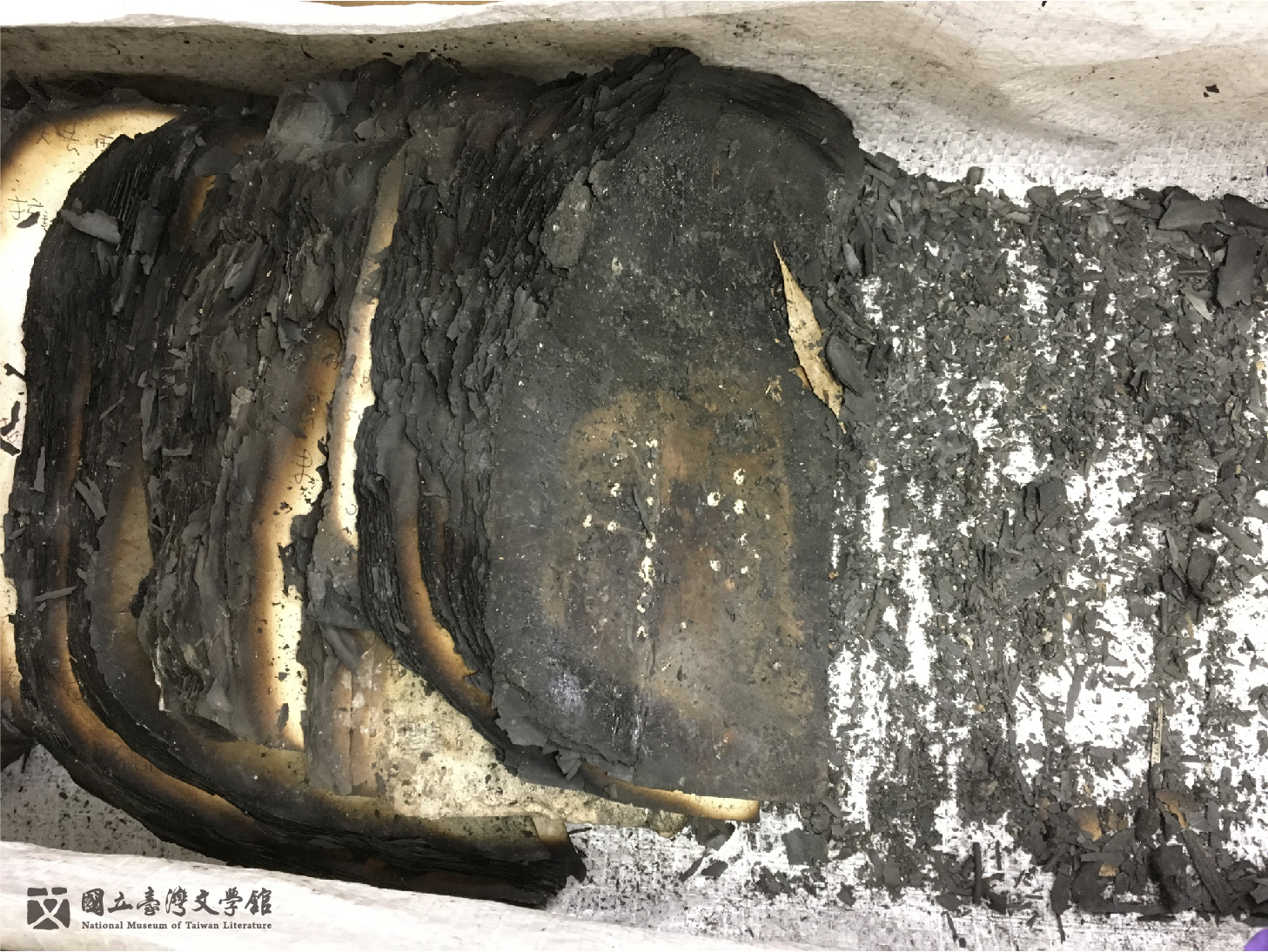
⭔ Condition of Manuscripts upon Arrival and Unboxing
Paper of the manuscripts is severely brittle. (Kept in National Museum of Taiwan Literature)
Fortunately, a wooden cabinet that had fallen over during the fire preserved a decade's worth of the writer’s invaluable manuscripts. With Sakinu's permission, the Taiwan Literary Museum retrieved these fire-damaged manuscripts in June of the same year, hopeful that they could restore their forgotten brilliance. The manuscripts underwent preliminary radiation for mold removal, strength and structural analysis of the paper, and harmful fumes testing. Eventually, a series of restoration strategies were adopted, along with tailored archival maintenance measures to allow the damaged manuscripts to be safely studied and displayed.
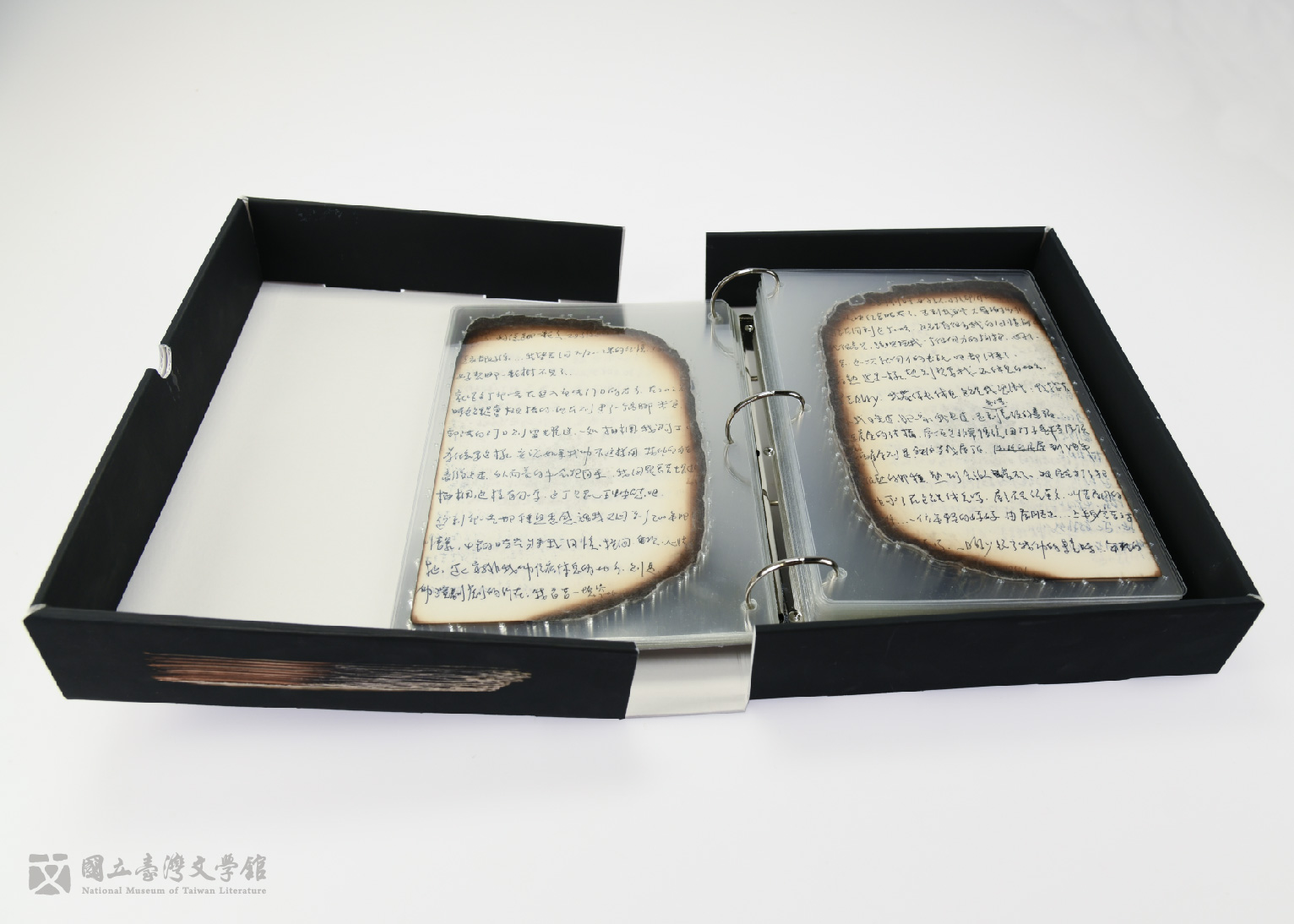
⭔ Sakinu Yalonglong's manuscripts
The paper has suffered complex degradation issues such as severe charring, mold damage, medium staining, color bleeding, stains, deformation, charcoal covering, and other residual harmful substances after being subjected to a large fire, firefighting water, and wind drying. This has to some extent affected the structural integrity and appearance of the manuscript, making preservation extremely difficult. Fortunately, about 2/3 of the original manuscript still exists. The National Museum of Taiwan Literature has undertaken the task of restoration, hoping to revitalize this dust-covered manuscript. After restoration, the Sakinu manuscript is stored in a custom-made protective box. (Provided by Sakinu Yalonglong)
Cultural Trivia on Artifacts
Is Radiation Really that Scary?
News stories about nuclear disasters often create a stigma around radiation, but is it as dangerous as we think? Actually, when used wisely, radiation is commonly applied for sterilization and pest removal in food, medicine, and industrial products, as well as for mold removal in cultural artifacts—just like in the restoration case of Sakinu’s manuscripts.
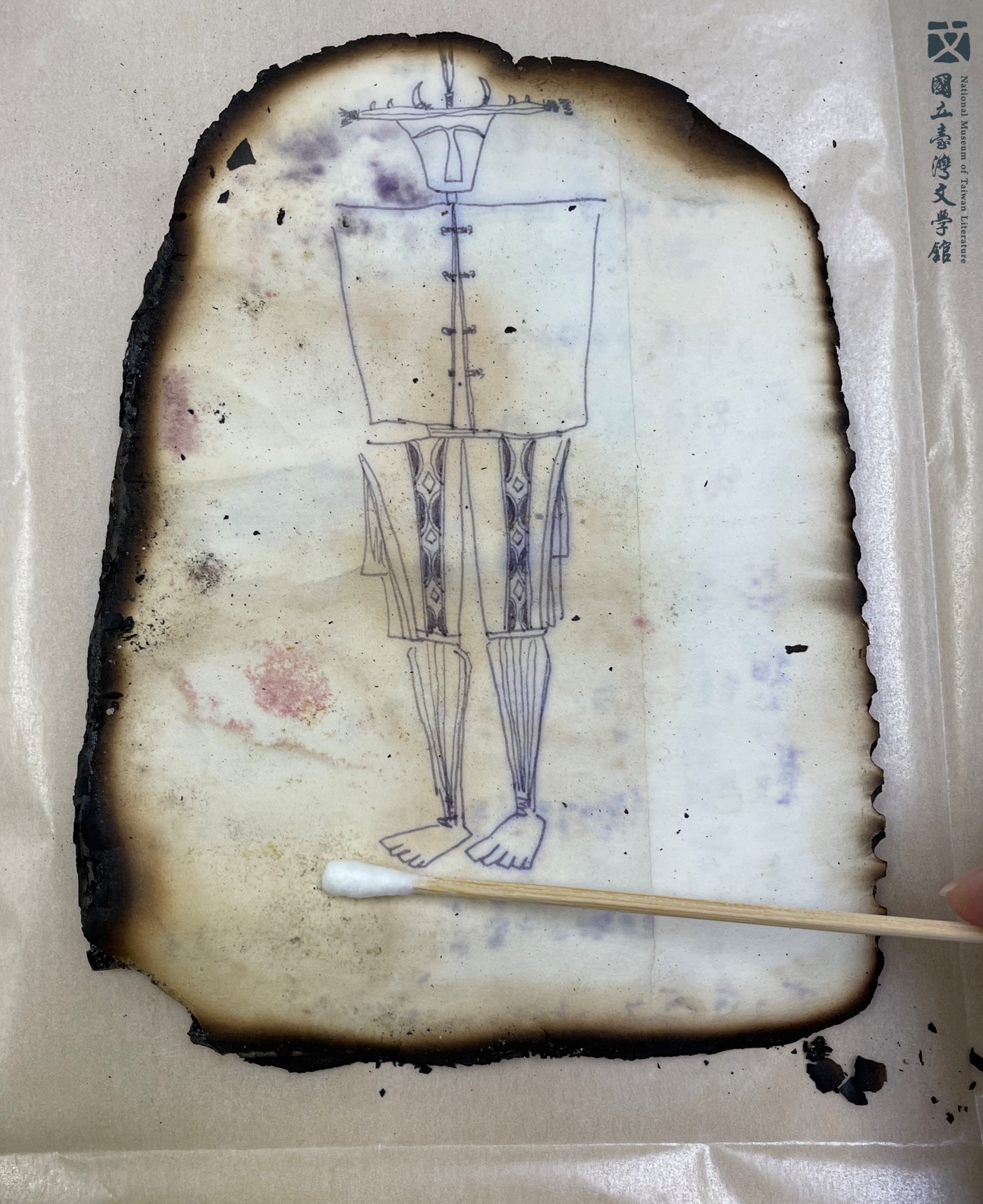
⭔ Sampling for Manuscript Mold Testing
Kept in National Museum of Taiwan Literature
This restoration used Cobalt-60 (Co-60) gamma radiation. The benefit of this method is that no residual radiation is left behind. By controlling the duration of exposure, the accumulated radiation dose was managed, effectively destroying the mold's DNA to complete the sterilization operation. However, in cultural preservation, radiation could potentially degrade the paper's physical and chemical properties; therefore, in this repair study, various low-dose radiation of 0.5, 1, 3, 5, 7, and 10kGy were tested on the test objects to find the minimal but effective radiation dose that would minimize damage to the paper.
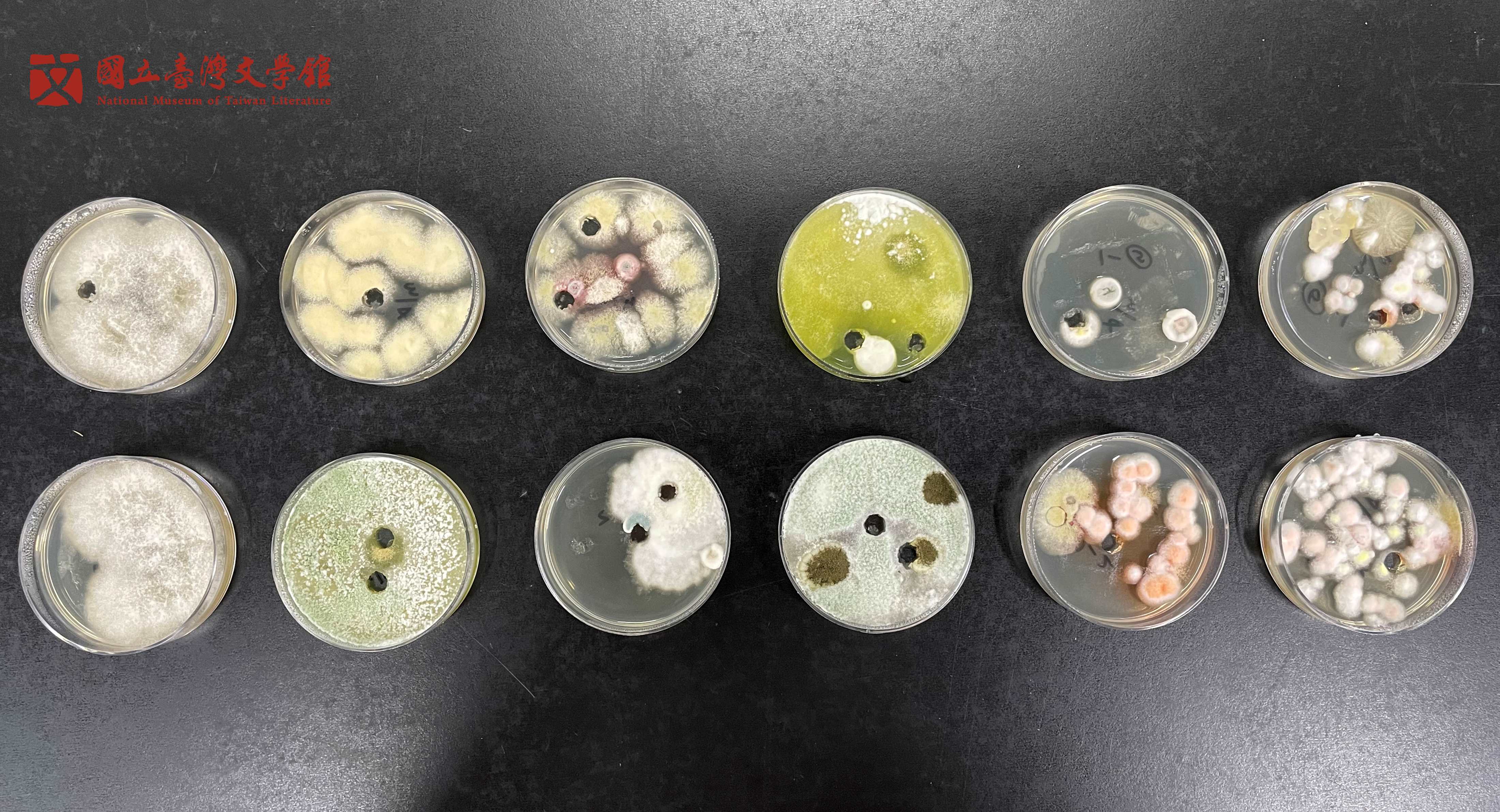
⭔ Culture Medium for Mold Before Radiation Treatment
Kept in National Museum of Taiwan Literature

⭔ Culture Medium for Mold After Radiation Treatment
It is evident that after exposure to a 3 kGY dose, mold no longer grows. Experimental results indicate that through proper restoration, the diminished paper strength due to radiation exposure can be restored. (Kept in National Museum of Taiwan Literature)
The results show that using 3kGy is sufficient as a safe and effective dose for mold removal for this batch of manuscripts. After sterilization, no mold growth was observed after 14 days of cultivation. Fourier Transform Infrared Spectroscopy (FTIR) was used to examine paper samples. After exposure to a 3kGy dose, there were no significant changes in chemical bonding in the fiber spectrum. According to the results of the paper folding endurance test, the physical structural strength of the fibers, which had decreased after radiation exposure, can also be restored through restoration methods. This makes radiation a secret weapon for aiding in the restoration of the Sakinu manuscript!
Trudge Forward to Move Forward
Mutual Trust and Support: Restoration and Authentic Reproduction of Lai Ho's Manuscripts
In recent years, the Taiwan Literature Museum has been actively engaging in exchanges with literary museums across different regions, forming a family of literary museums. Recognizing that local museums often struggle with limited manpower and resources to address the issue of collection preservation, the Taiwan Literature Museum has established a collaborative mechanism for collection preservation among literary-themed museums. This provides professional assistance in artifact and collection restoration, focusing on small and medium-sized museums that have limited space, resources, and manpower. The aim is for the Taiwan Literature Museum to lead smaller museums in carrying out the common mission of preserving Taiwanese literature.
In 2021, the Taiwan Literature Museum published the NEWLY COMPILED COMPLETE WORKS OF LAI HO, reorganizing Lai Ho's manuscript artifacts and initiating a manuscript collection effort in collaboration with the Lai Ho Cultural and Educational Foundation. Manuscripts originally stored in the Lai Ho Memorial Museum have been gradually donated to the Taiwan Literature Museum in recent years, due to concerns about the difficulty of preserving these artifacts. Considering the need for the museum to hold external exhibitions, the museum aids in the restoration, digitization, and professional authentic reproduction of the original manuscripts through collaborative projects. This allows the original manuscripts to be properly preserved while also being substituted by authentic reproductions for display in the Lai Ho Memorial Museum, thus continually conveying the spirit and literary power of the author.
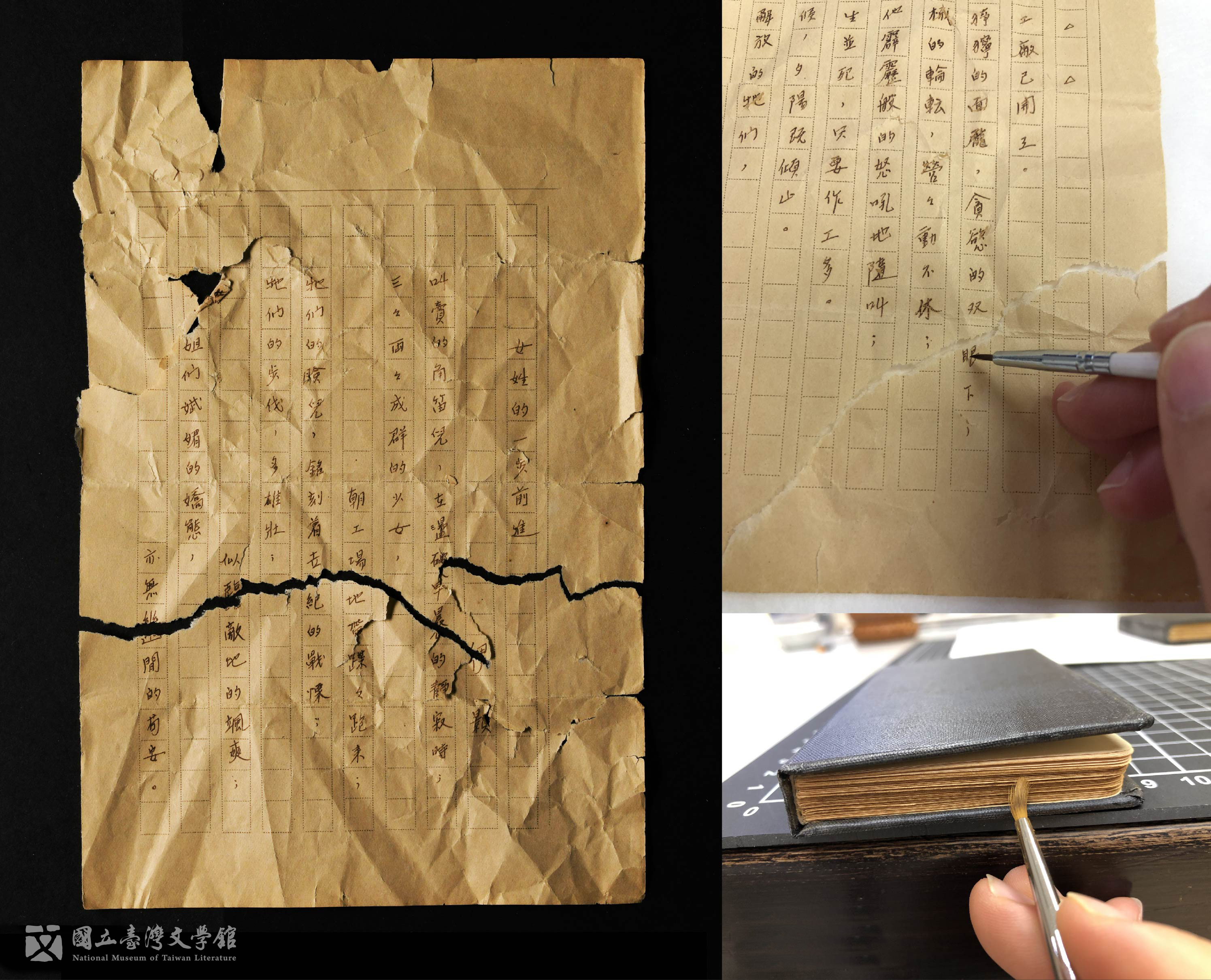
⭔ "A Step Forward for Women" by Lai Ho
This batch of manuscripts was donated by Lai Ho's eldest grandson, Lai Yueyan. Most are written in ink on manuscript paper. In extreme cases, the paper has been torn and crumpled, resulting in several severe folds and breaks into multiple sections, making it impossible to hold. The writing has also been significantly worn away, with some parts now illegible. Other manuscripts also have partial losses, folds, and mild media corrosion issues. (Provided by Lai Ho Memorial Hall)
Rehabbing Aged Literary Works – All Hands on Deck
Continuation of Sentiment and Memory: The Path to Preserving and Restoring Manuscripts in the Zi Xia Tang
Zi Xia Tang holds a treasure trove of valuable historical materials related to the development of Taiwanese Sinology and literature, with over a thousand artifacts in its collection. Despite the hall's best efforts to preserve these valuable intellectual treasures, they have inevitably deteriorated over a century of circulation. Through a two-year comprehensive collaboration, assistance has been given to Zi Xia Tang to complete the cataloging, pest control, and preservation of 928 artifacts, digitalization of 121 artifacts, and the restoration of 30 artifacts, prioritizing manuscripts, photographs, or particularly rare standalone works given the time constraints.
Limited by the environment for collection preservation and manpower, stabilizing the condition of these century-old treasures provides strong support for local preservation. This, in turn, prolongs the local cultural context and is the greatest embodiment of the spirit of the literary family.
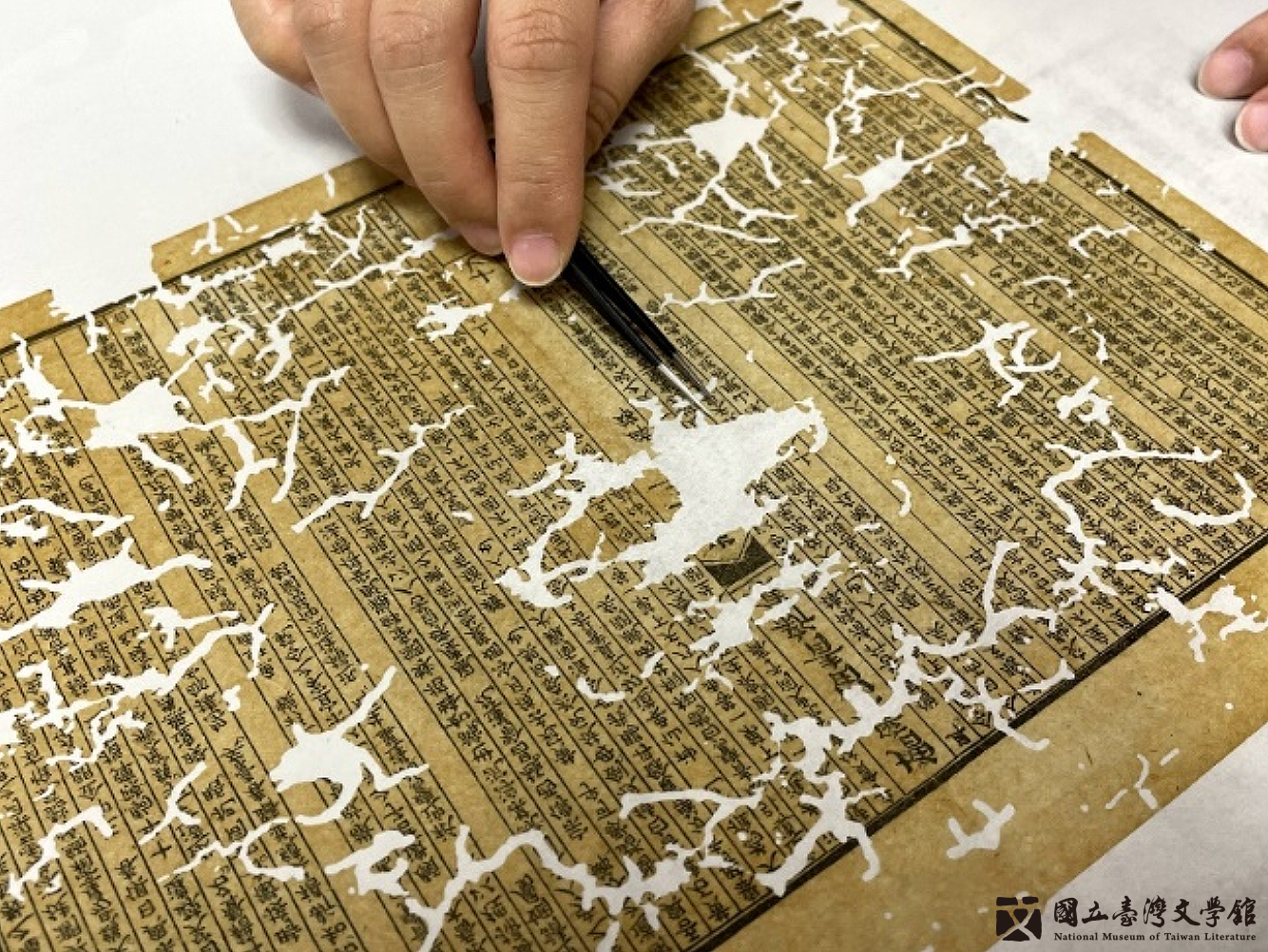
⭔ Page Sorting
Some artifacts from the Zi Xia Tang have pages that are severely stuck together due to insect damage. It took a great deal of time to carefully separate each page and sort them. Through re-binding, flattening, and paper lining, each artifact's current condition is stabilized one by one. (Kept in National Museum of Taiwan Literature)
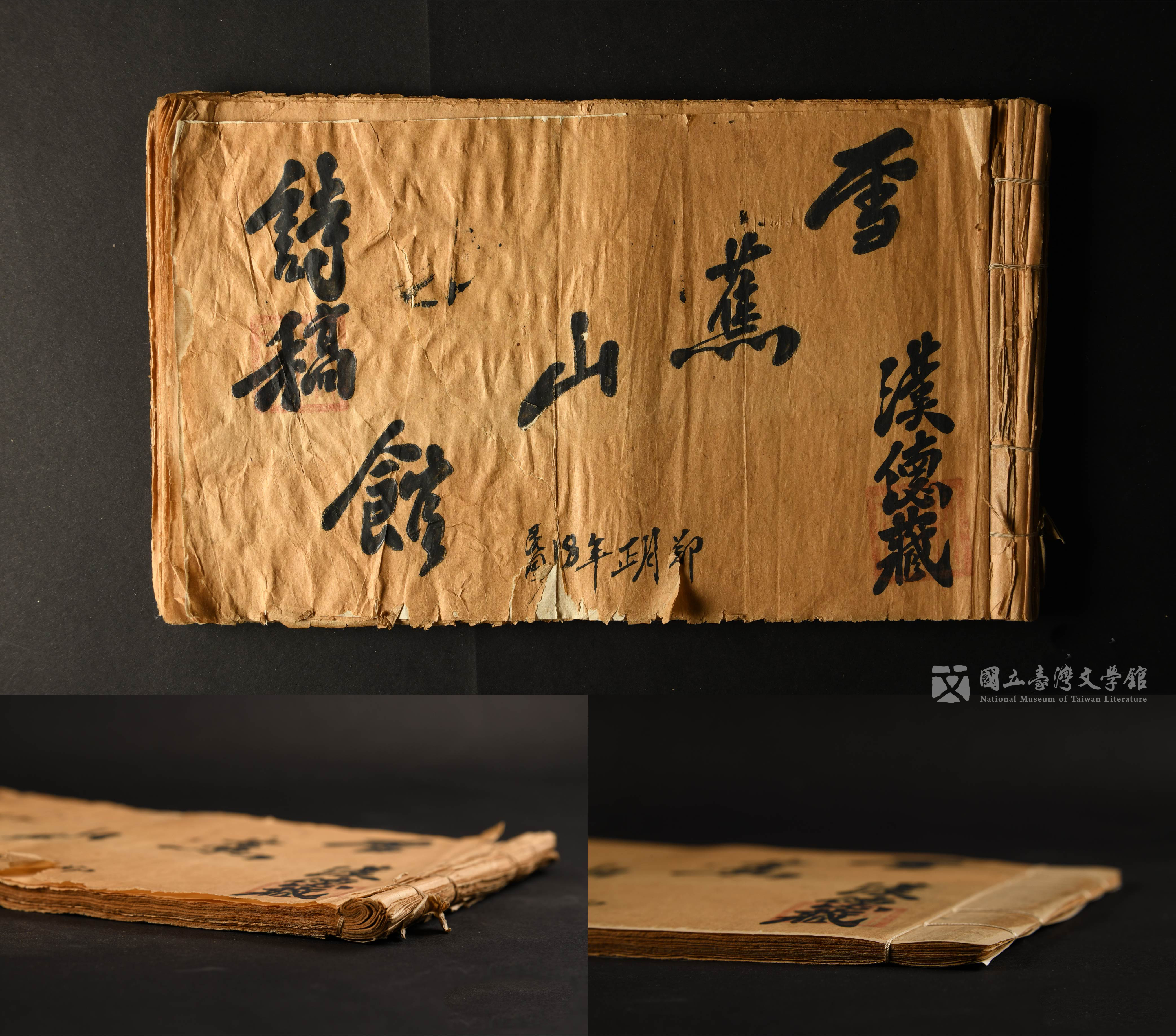
⭔ POETRY OF XUEJIAOSHAN GUAN by Zheng Jia-zhen
The book is severely corroded due to being bound with iron wire staples. After restoration, the staples were replaced with thread at the same locations, and the book was rebound. (Provided by Zi Xia Tang)
Sketches of a Bohemian Scholar
Shih Ming-cheng's Hand-drawn Pencil Sketches—Portrait Restoration
Shih Ming-cheng wrote his first novel THE COAT AND TEARS in prison in 1967, kickstarting his literary career. He also published poetry, paintings, and sculptures. Poet and scholar Lin Jui-ming described him in the preface to the SHIH MING-CHENG COLLECTION as a "devil who collides life with art," believing that he holds "an irreplaceable important position in the history of Taiwan literature."
The Taiwan Literature Museum holds 19 character sketches created by Shi Mingzheng, provided by the Chung Li-ho Memorial Museum. Established in 1979, the Chung Li-ho Memorial Museum received support from numerous writers and painters, including Shi Mingzheng, and completed dozens of writer sketches, which were then framed and displayed in the museum.
The powerful and delicate brush strokes intricately depict the demeanor of several poets and novelists. Before entering the museum, due to poor framing materials and the collection environment, the same batch of works showed significant disparity in their preservation conditions. Even after restoration, the deceleration of yellowing is limited. Through the removal of improper materials and appropriate treatment, a reassembled group portrait of literary creators has been achieved.
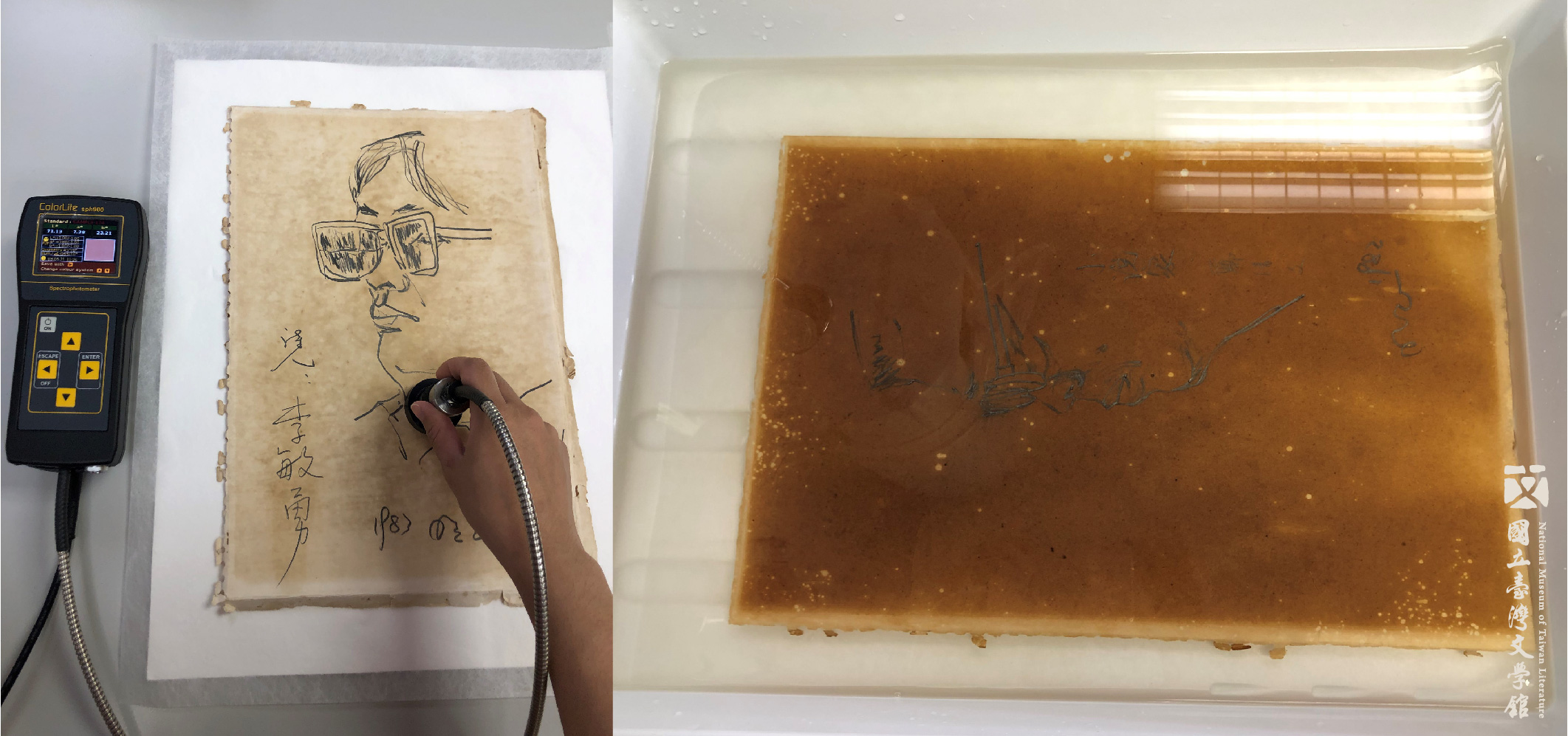
⭔ Cleaning Severely Yellowed Artwork
Colorimeters are used to record changes in paper color throughout the cleaning process. (Kept in National Museum of Taiwan Literature)
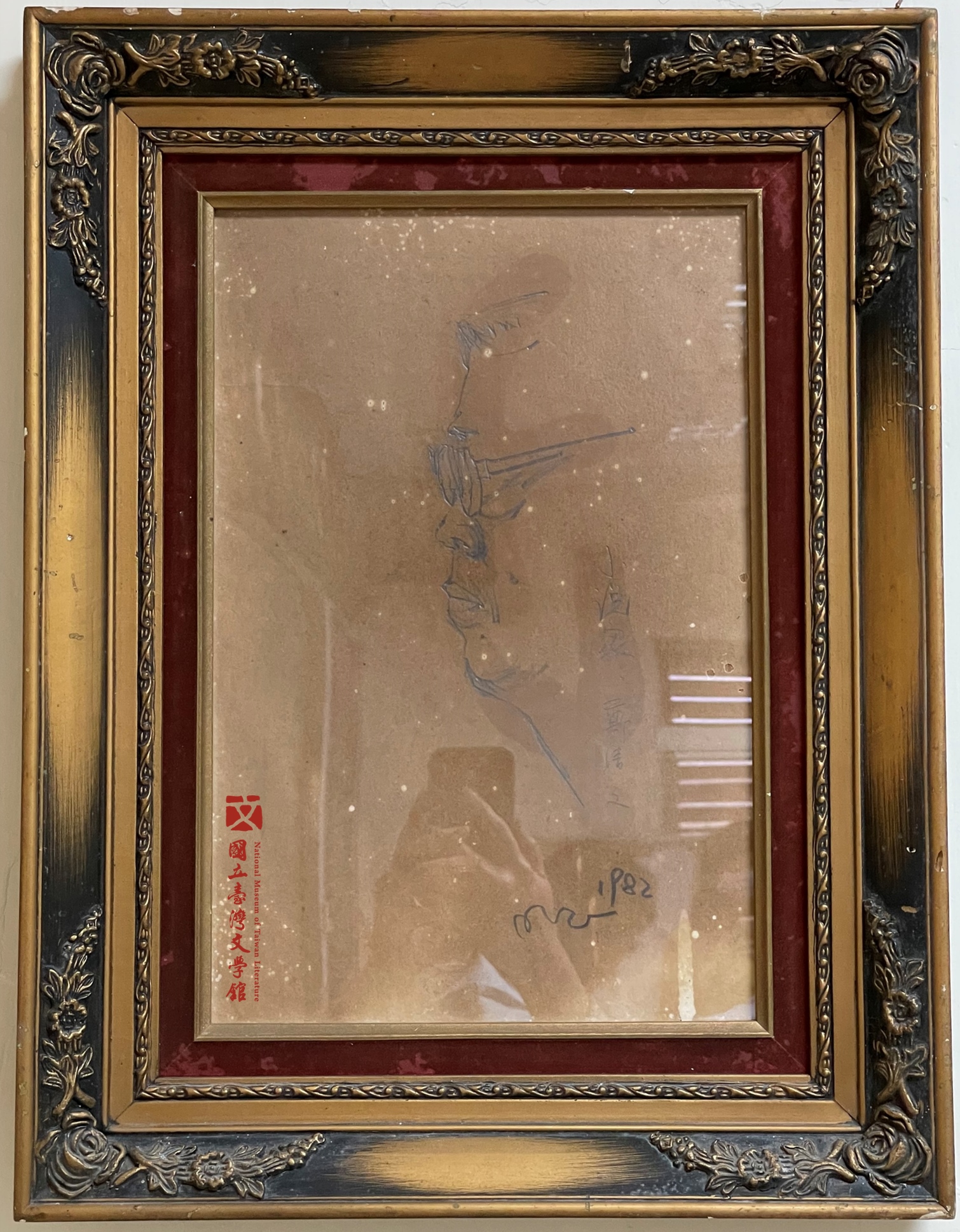
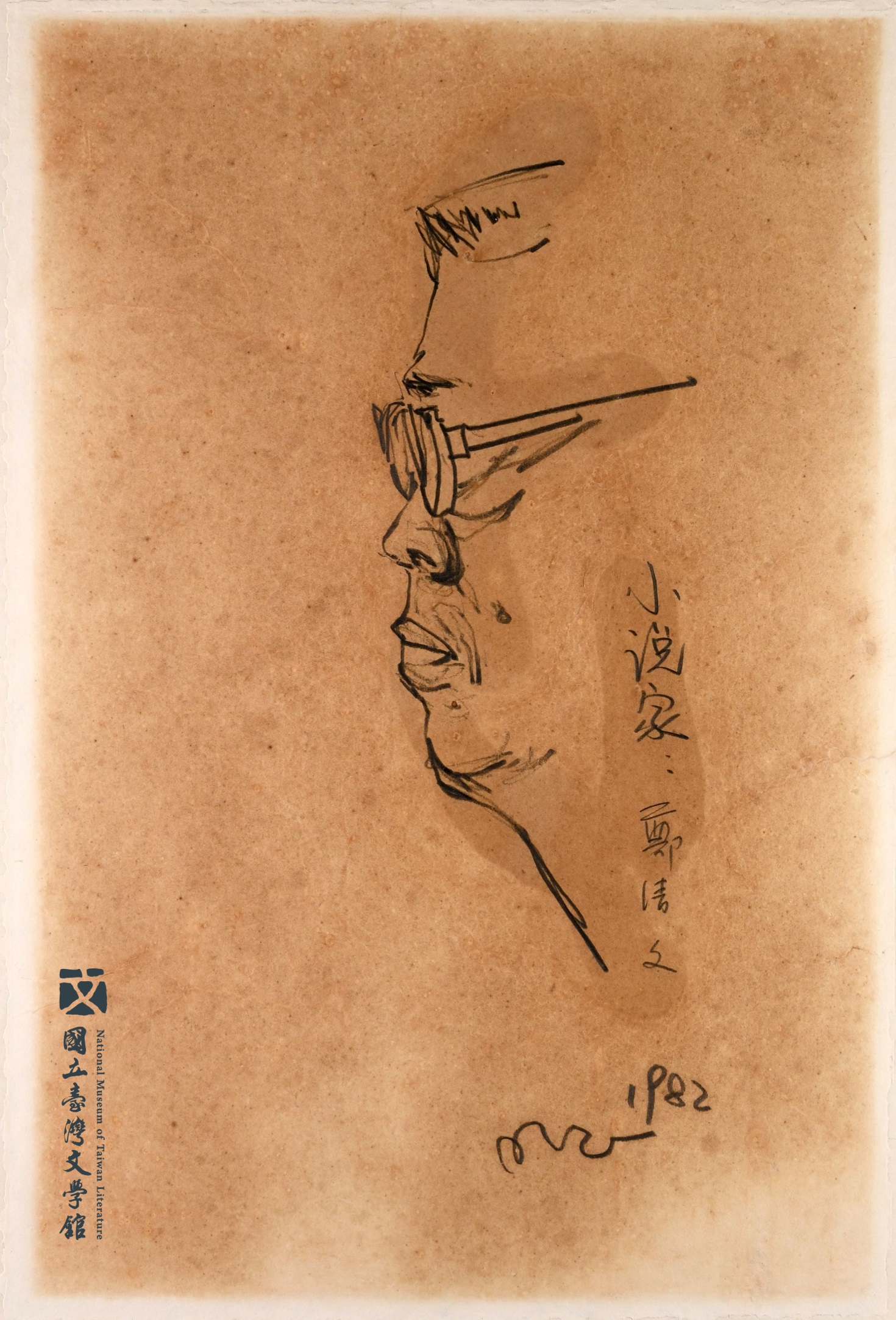
⭔ "Portrait of Tzeng, Ching-Wen" by Shih Ming-cheng(Before & After)
In early 2021, the Taiwan Literature Museum went to the memorial hall for inspection; this batch of drawings was displayed in the conference room. Among them, the drawing of "Novelist Tzeng Ching-wen" was the most severely discolored due to its proximity to a west-facing window and direct contact with the wooden backing of the frame, making the pencil lines on the yellow-brown base paper almost unrecognizable. (Kept in National Museum of Taiwan Literature)
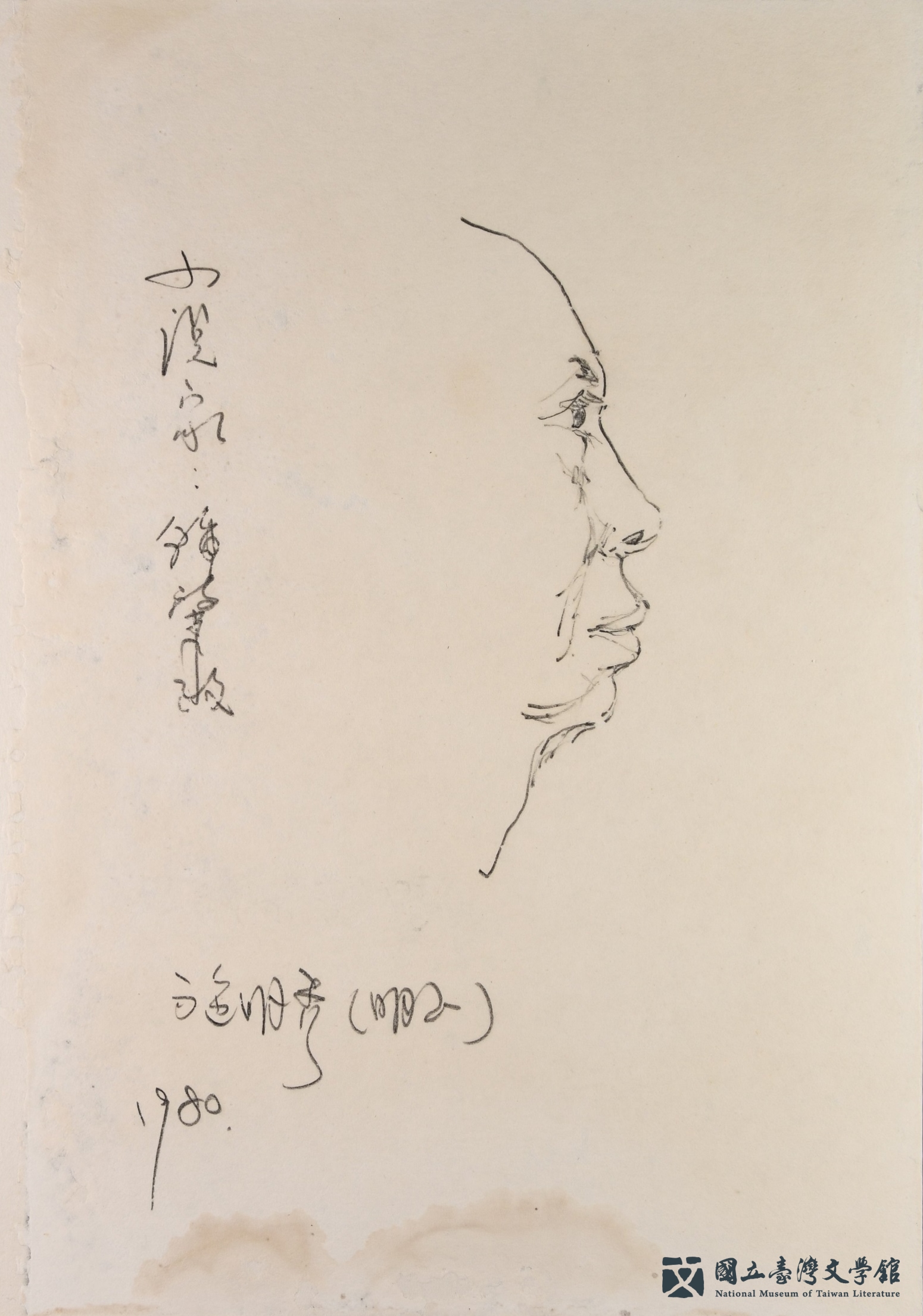
⭔ Shih Ming-cheng Hand-drawn Pencil Sketch: Portrait of Chung Chao-cheng
Kept in National Museum of Taiwan Literature
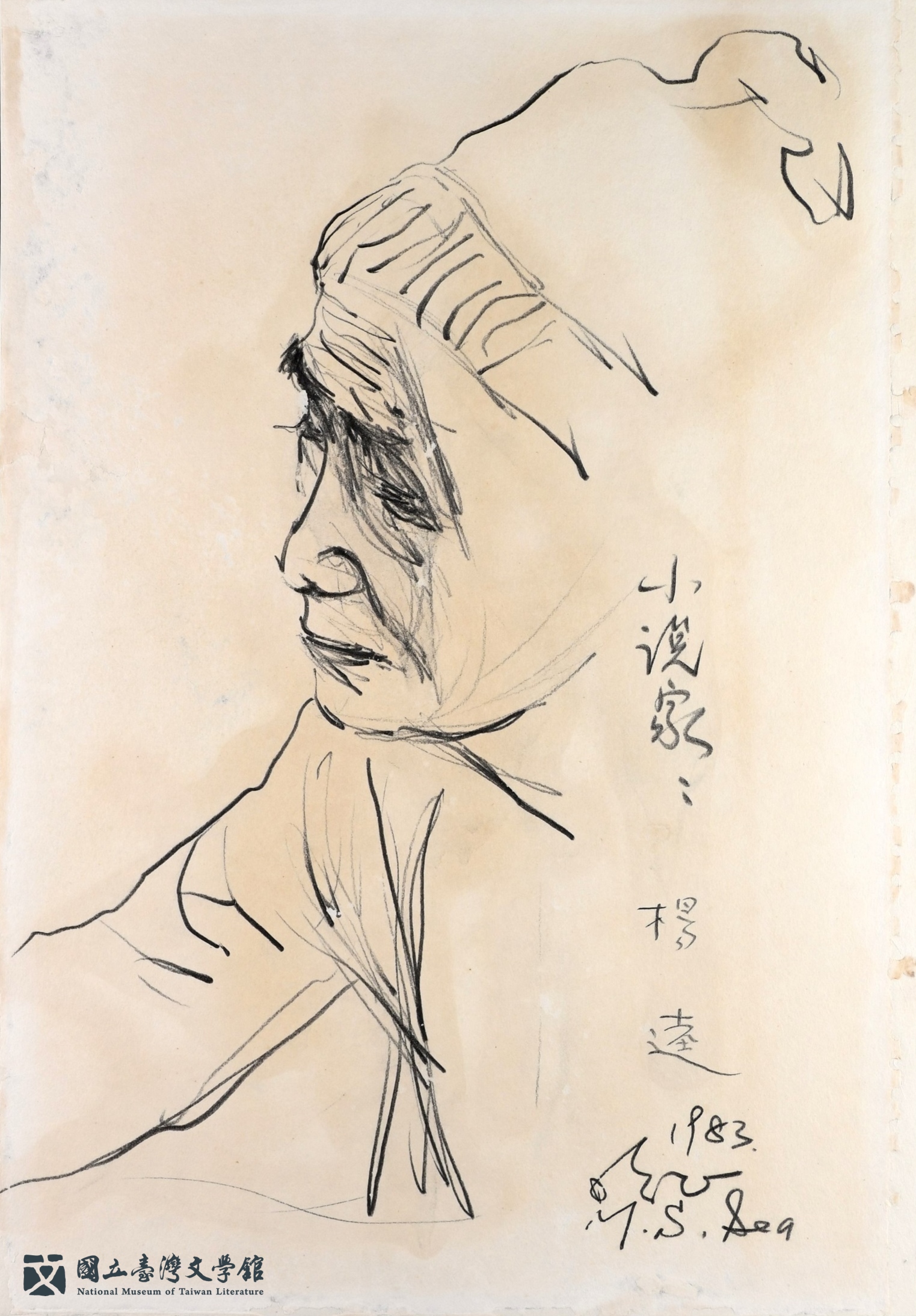
⭔ Shih Ming-cheng's Hand-drawn Pencil Sketch: Portrait of Yang Kuei
Kept in National Museum of Taiwan Literature
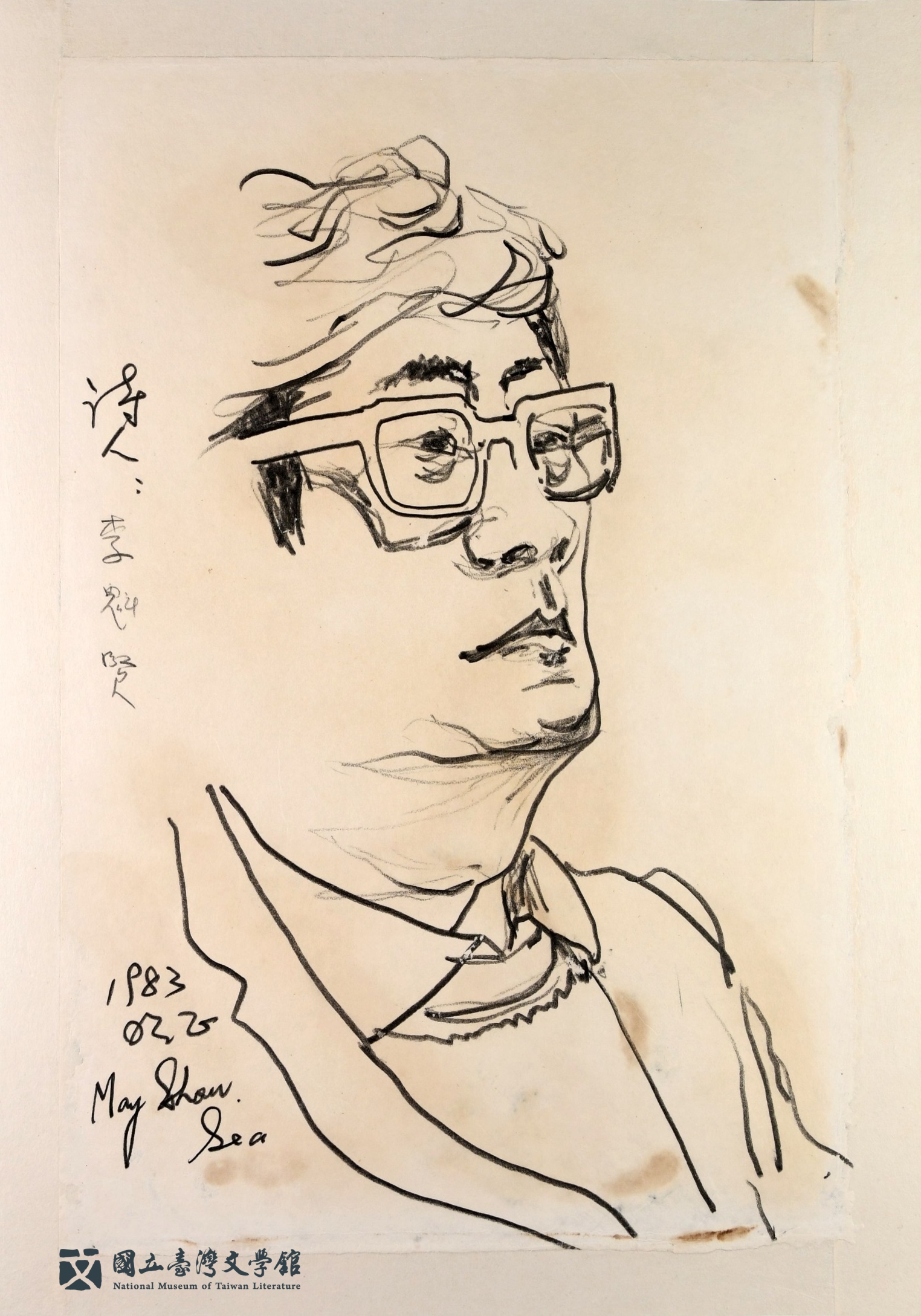
⭔ Shih Ming-cheng's Hand-drawn Pencil Sketch: Portrait of Lee Kuei-shien (1983)
Kept in National Museum of Taiwan Literature
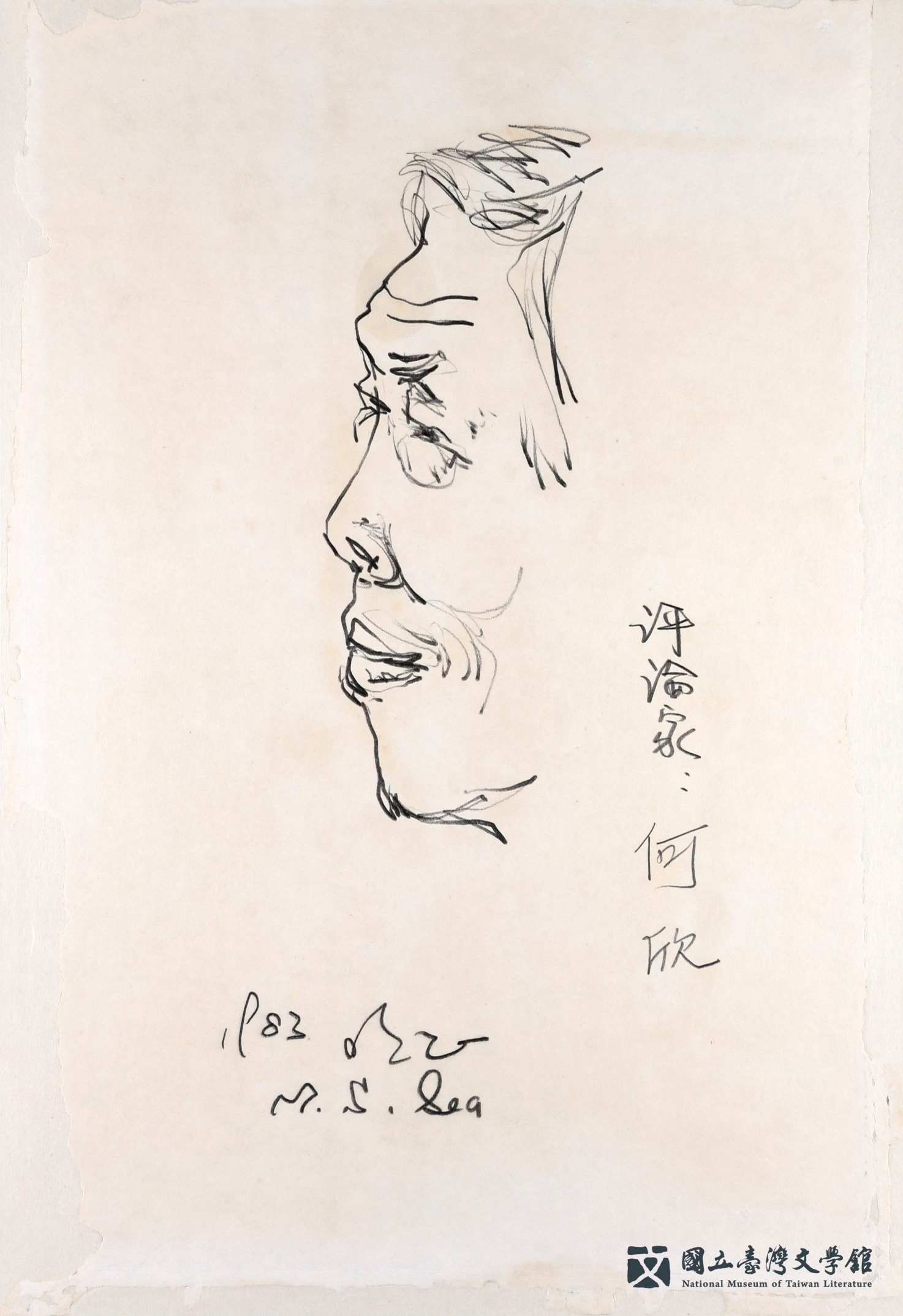
⭔ Shih Ming-cheng's Hand-drawn Pencil Sketch: Portrait of He Xin
Kept in National Museum of Taiwan Literature
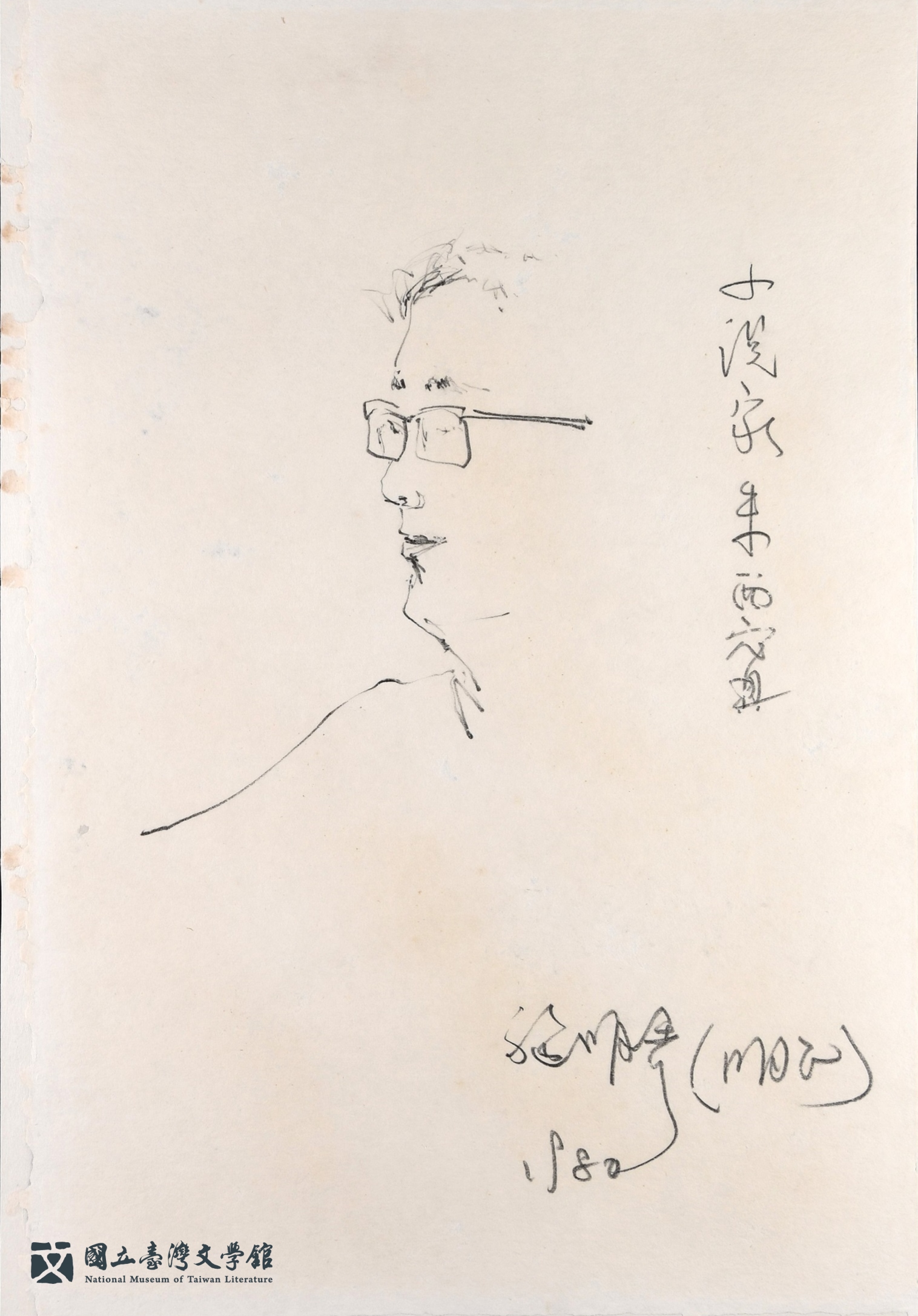
⭔ Hand-drawn Pencil Sketch: Portrait of Chu Hsi-ning
Kept in National Museum of Taiwan Literature
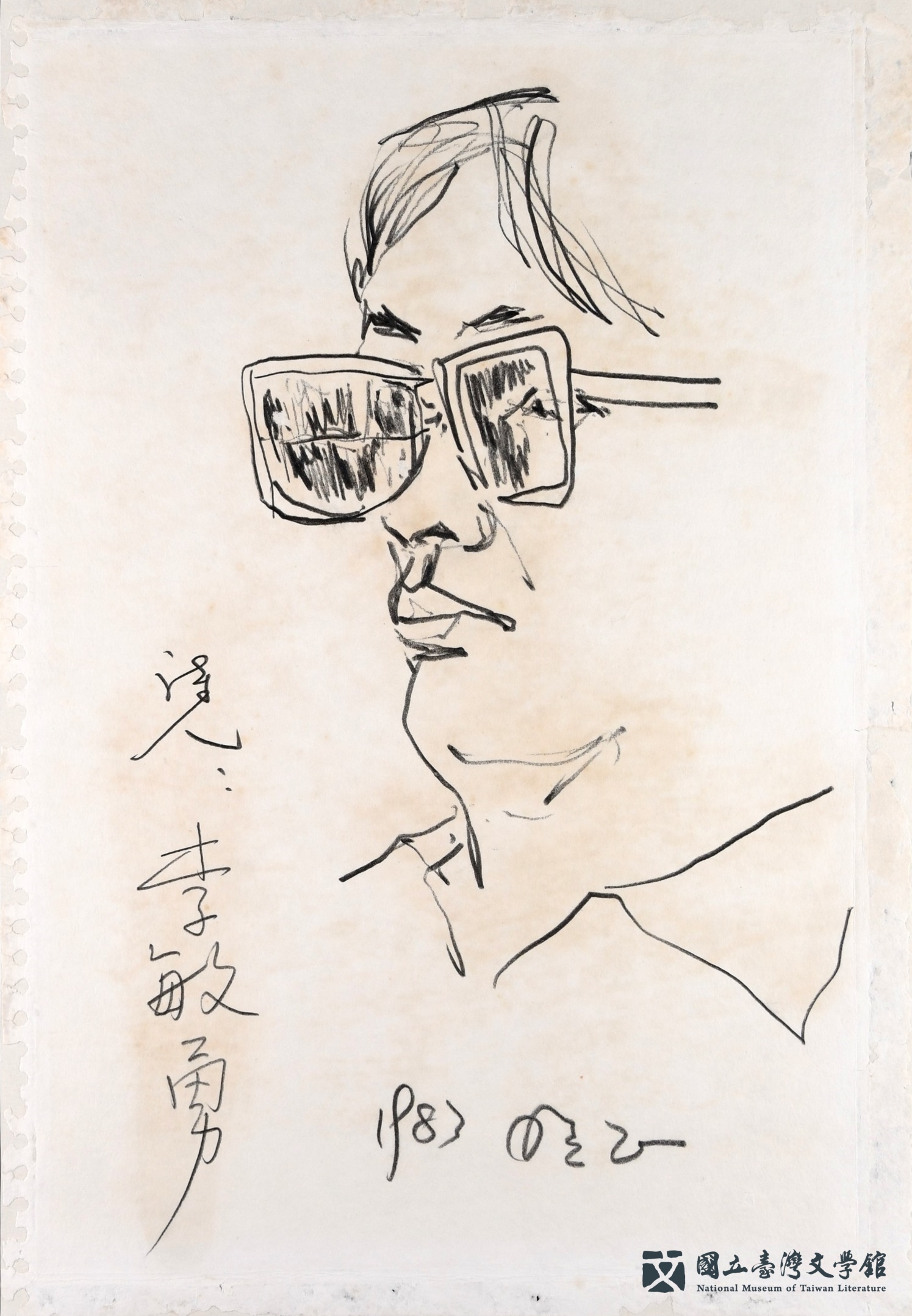
⭔ Hand-drawn Pencil Sketch: Portrait of Li Min-yung
Kept in National Museum of Taiwan Literature
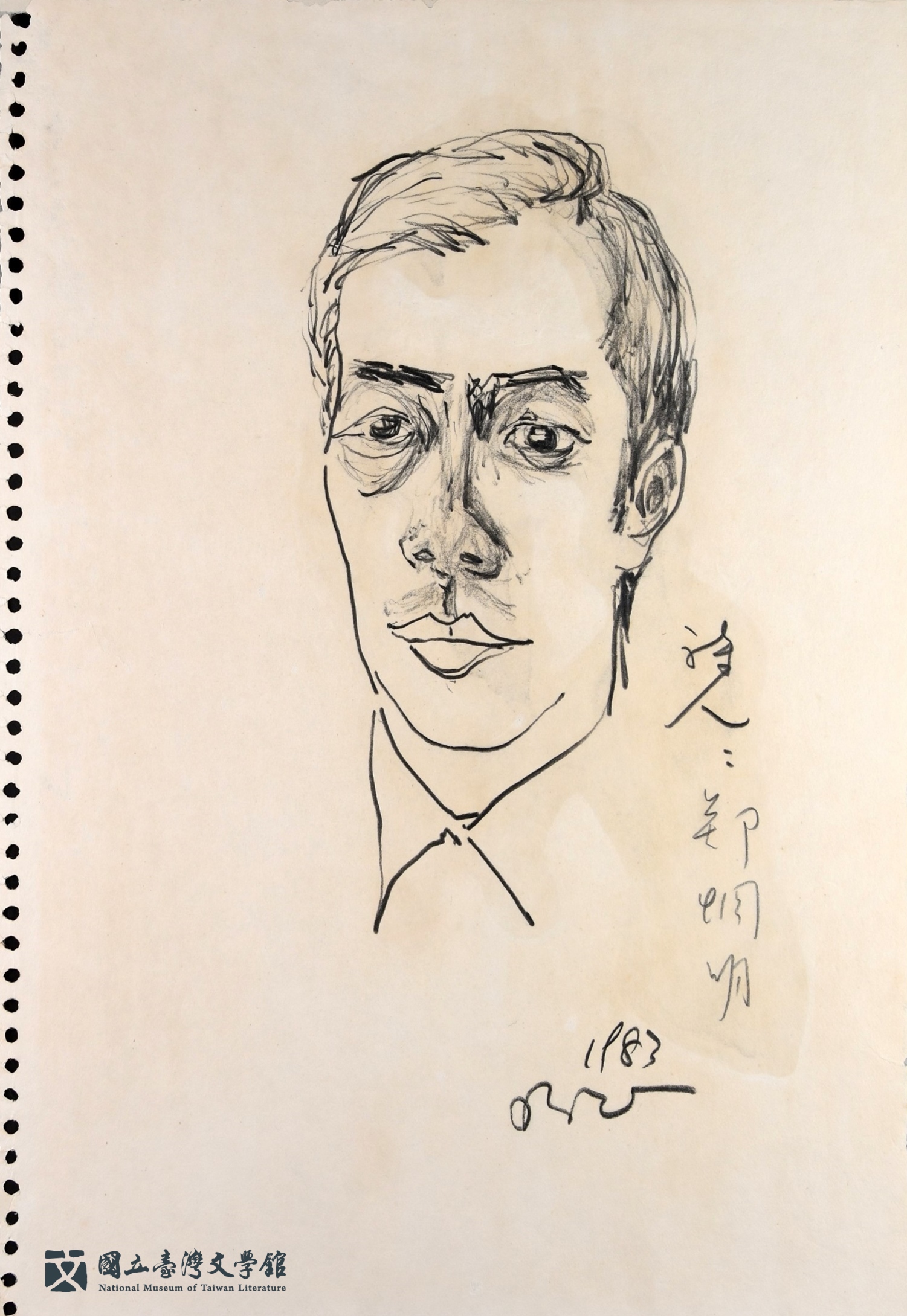
⭔ Hand-drawn Pencil Sketch: Portrait of Cheng Chiung-ming
Kept in National Museum of Taiwan Literature
⭔ Striking Art with Life — Shi Mingzheng's Oil Painting Restoration Journal
Kept in National Museum of Taiwan Literature

